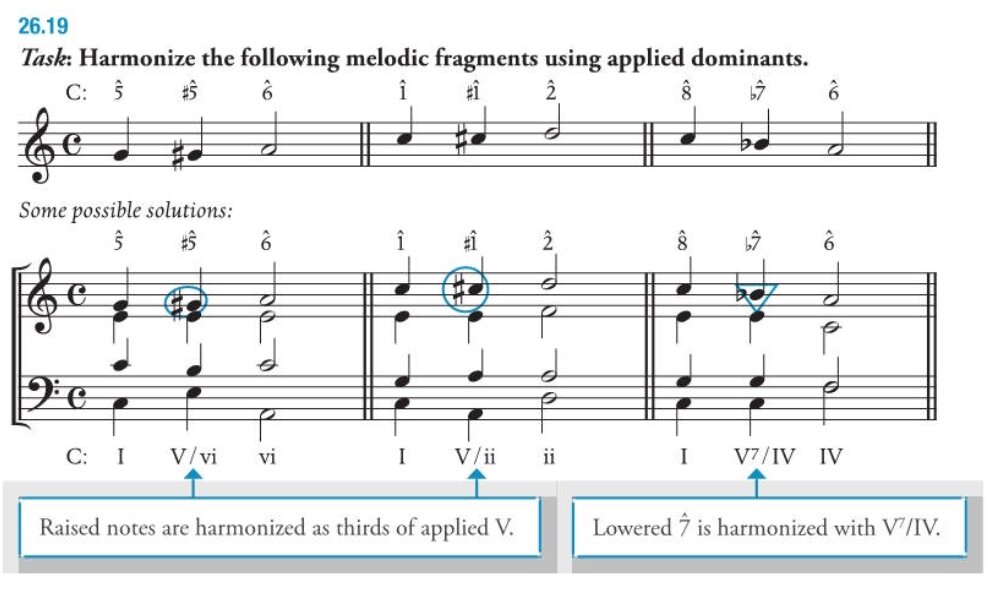$\text{V}^7$
$\text{V}^7$ is less stable than $\text{V}$. It contains a leading tone and a chordal 7th.
- leading tone: tends to resolve up by step (do not have to if in inner voices)
- chordal 7th: resolve down (no matter inner or outer)

it’s less suited for a half cadence (HC) than triad V; try to avoid it
omitting the 5th
in $\text{V}^7-\text{I}$
- omitting the 5th (of either chord) to avoid voice leading problems when the leading tone is the top voice
- double the root of the chord with omitted note
- never omit the 3rd
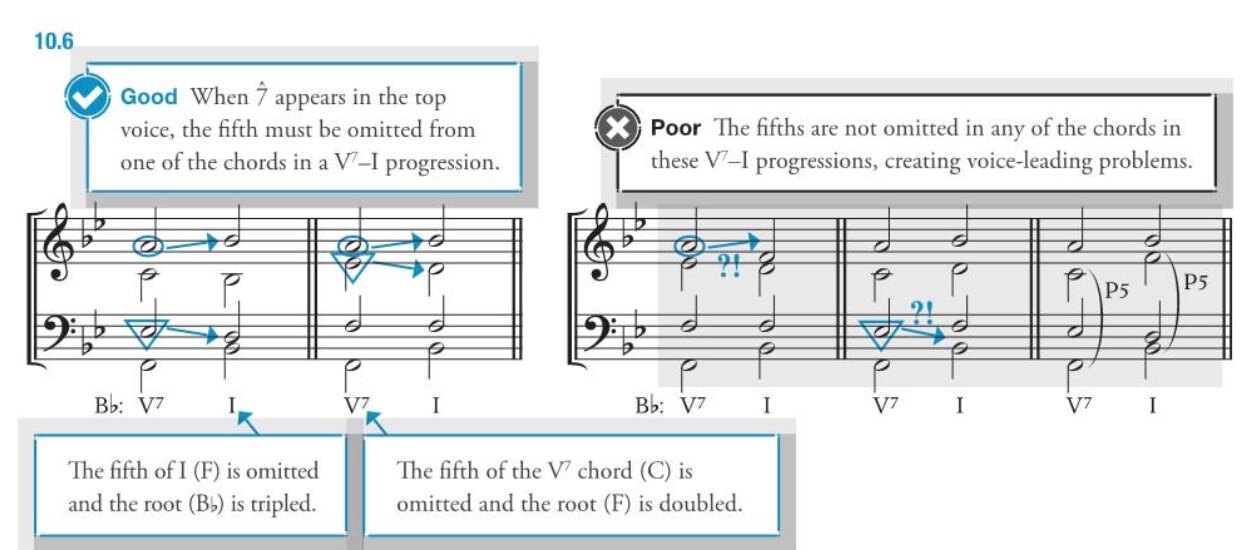
- $\text{V}^7-\text{V}$ should be avoided because the chordal 7th would not resolve
- $\text{V}-\text{V}^7$ common, labeled as $\text{V}^{8-7}$, usually resulted from adding the chordal 7th to an existing $\text{V}$
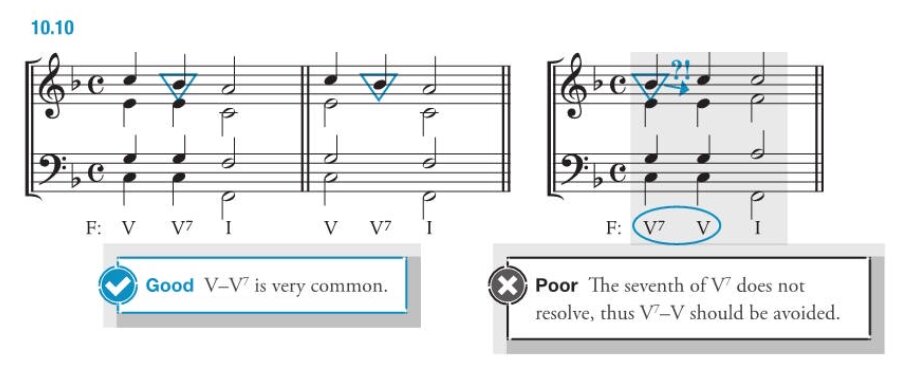

figured bass notation
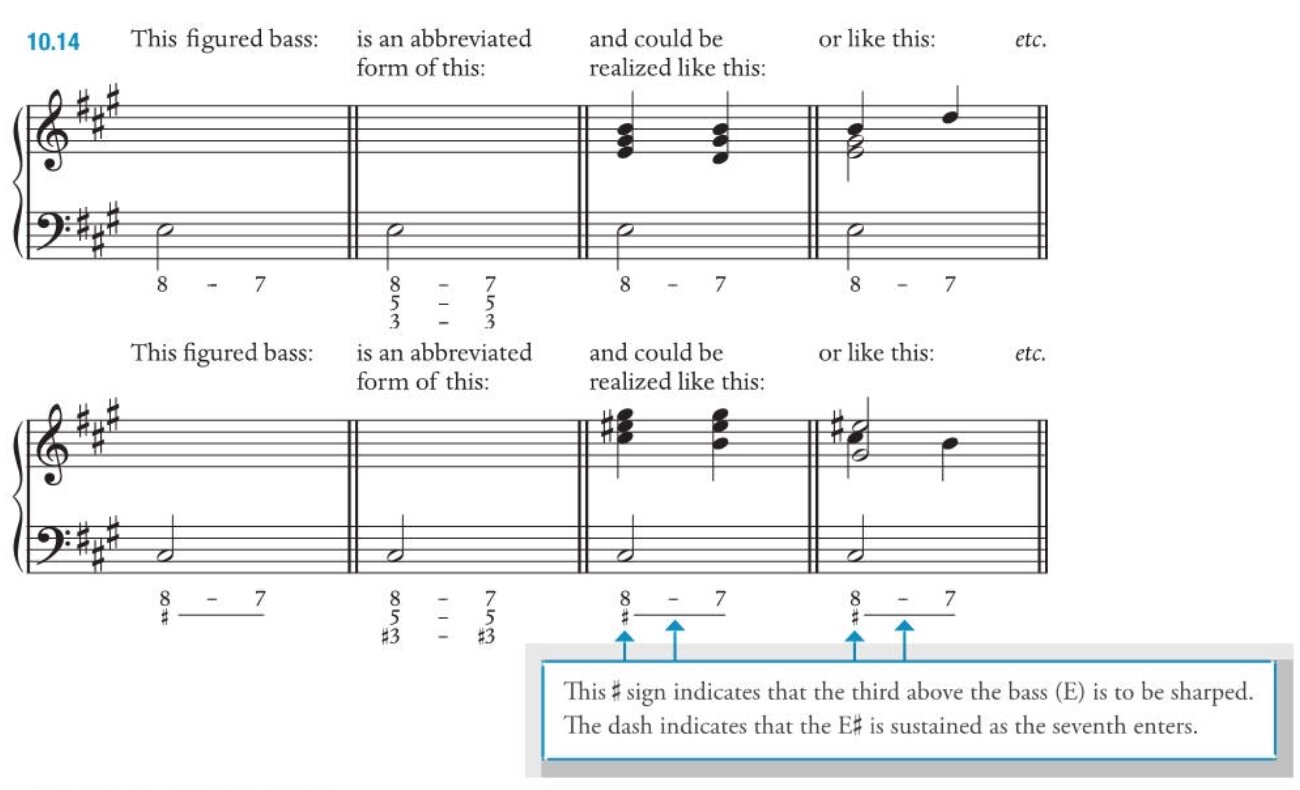
$\text{V}^6$
- dominant, like $\text{V}$
- typically appear in beginning/mid phrase
- in $\text{V}^6-\text{I}$, the bass moves in step and the upper voices move smoothly
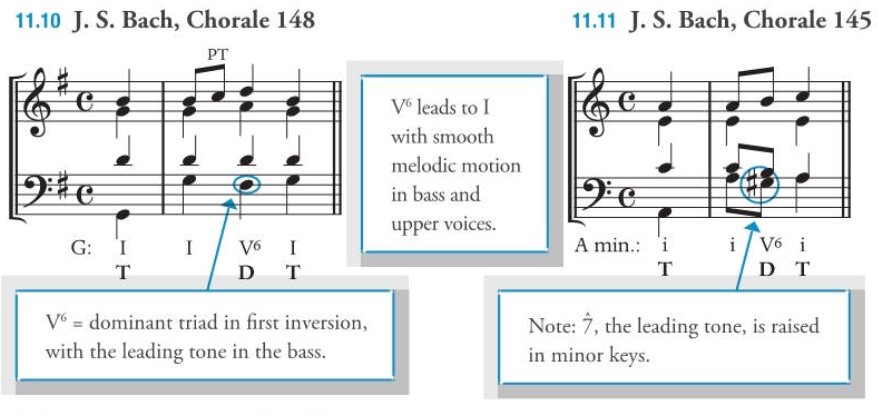
- $\text{V}^6-\text{V}$, $\text{V}^6-\text{V}^7$, $\text{V}-\text{V}^6$ are common
- $\text{V}^7-\text{V}^6$ is bad

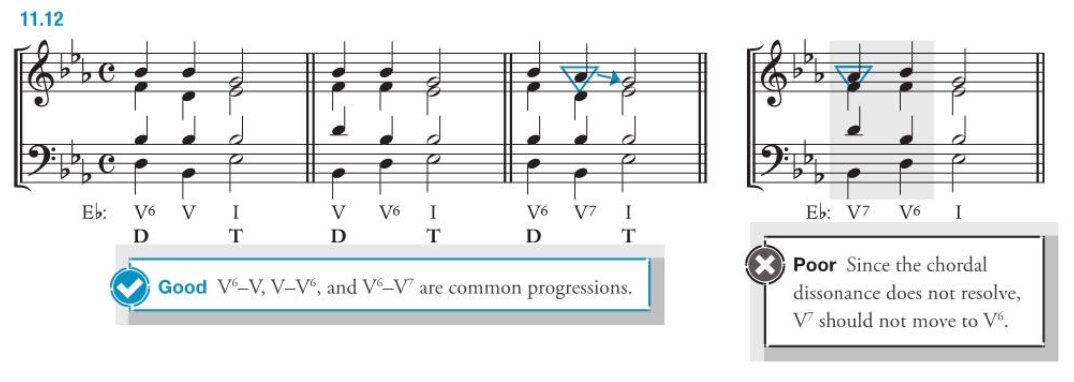
- $\text{I}^6-\text{V}^6$ is common
- $\text{V}^6-\text{I}^6$ is bad because the leading tone in $\text{V}^6$ bass is not resolved in a step (voice leading rule: in outer voices leading tone should step to tonic)
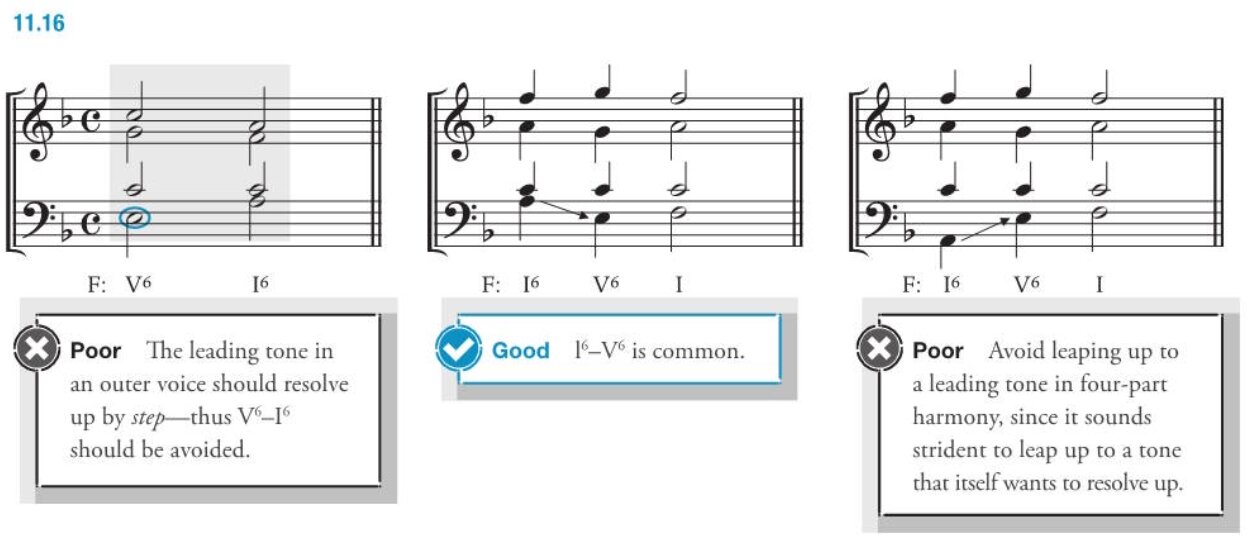
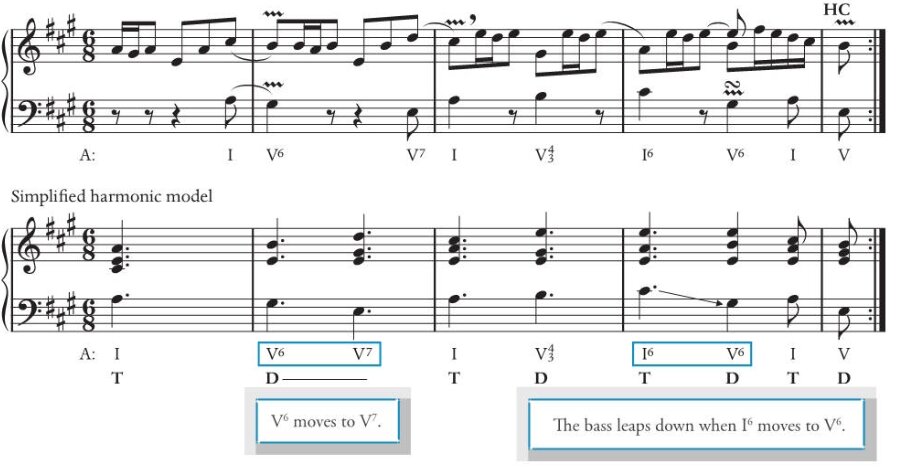
- $\text{V}^6$ should not be the final chord in half cadence
- $\text{V}^6$ should not be the dominant chord in perfect authentic cadence
- dominant chord must be in root position at cadence

double any note but the bass (leading tone)
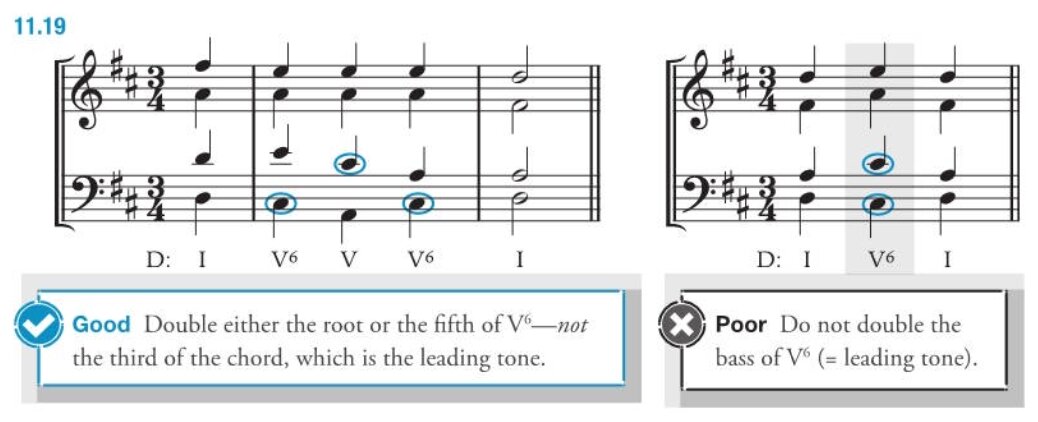
$\text{V}^6-\text{I}$ movement is smooth in all upper voices

$\text{V}_5^6$ and $\text{V}_2^4$
both $\text{V}_5^6$ and $\text{V}_2^4$ have tendency note in the bass
- dominants
- $\text{V}_5^6-\text{I}$: good
- $\text{V}_5^6-\text{I}^6$: bad (bass leading tone should not leap)
- $\text{V}_2^4-\text{I}$: bad (bass chordal 7th must step down)
- $\text{V}_2^4-\text{I}^6$: good
- $\text{I},\text{I}^6,\text{V},\text{V}^6,\text{V}^7$ could be followed by $\text{V}_5^6$

- $\text{V}_5^6$ could lead to $\text{V}^7$ and its inversion
- $\text{V}_5^6-\text{V}$, $\text{V}_5^6-\text{V}^6$ are bad because chordal 7th is not resolved down
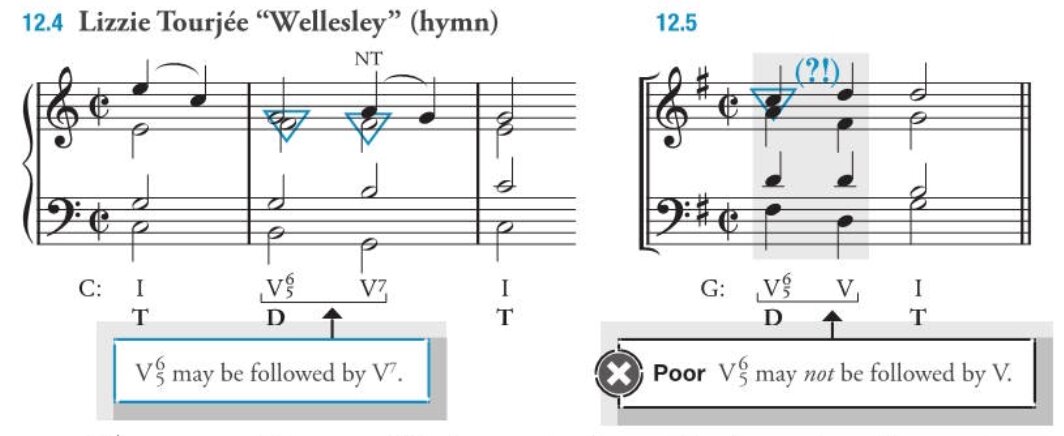
- $\text{I},\text{I}^6,\text{V},\text{V}^6,\text{V}^7$ could be followed by $\text{V}_2^4$
- $\text{V}-\text{V}_2^4$ is common
- $\text{V}_2^4-\text{V}$ is bad (chordal 7th is not resolved); $\text{V}_2^4-\text{V}^7$ also bad
- $\text{V}_2^4-\text{I}^6$ is the way
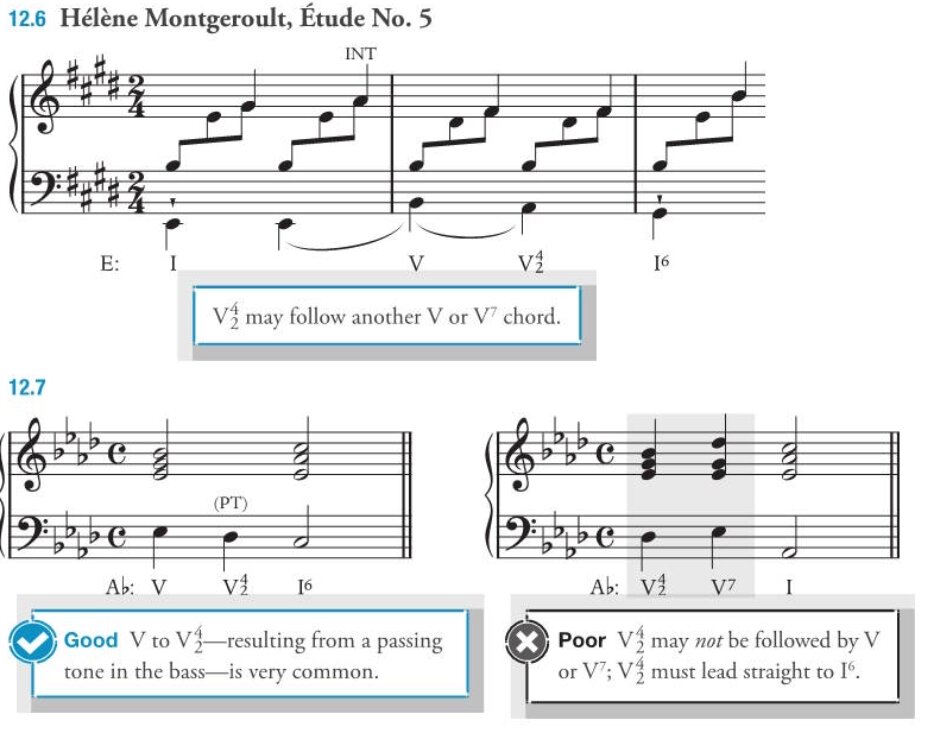
- $\text{V}_5^6$ could embellish $\text{I}$
- $\text{V}_2^4$ could embellish $\text{I}^6$

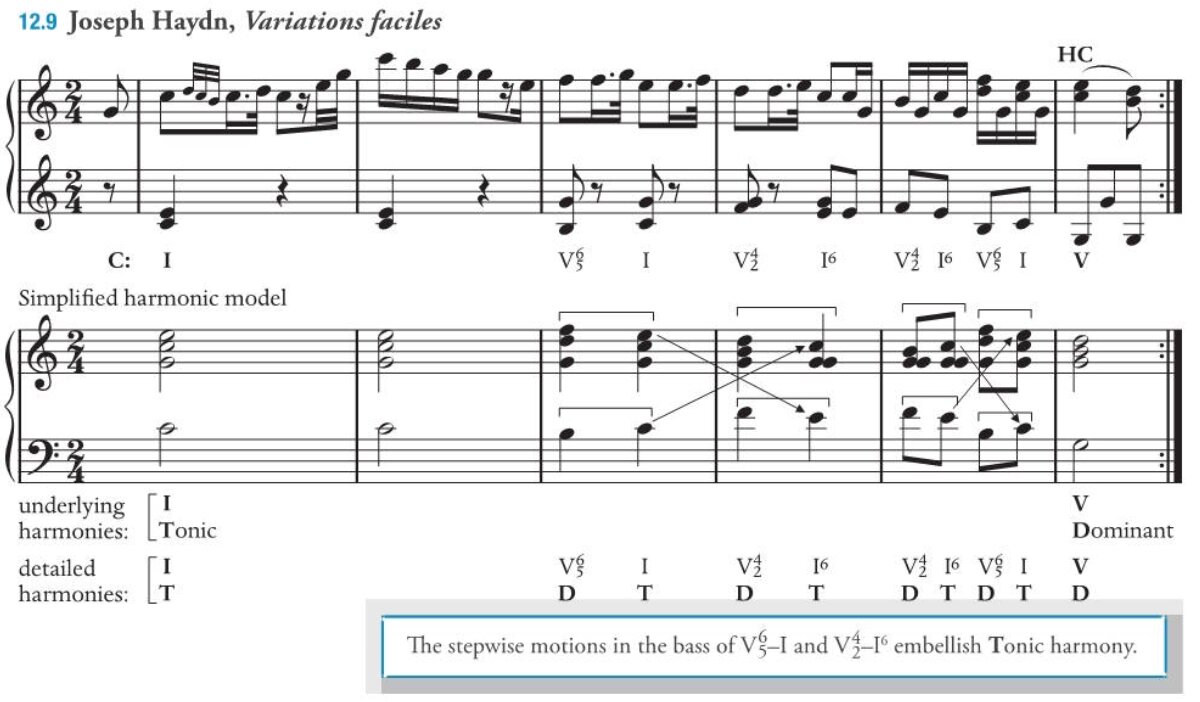
use inversions to promote variety
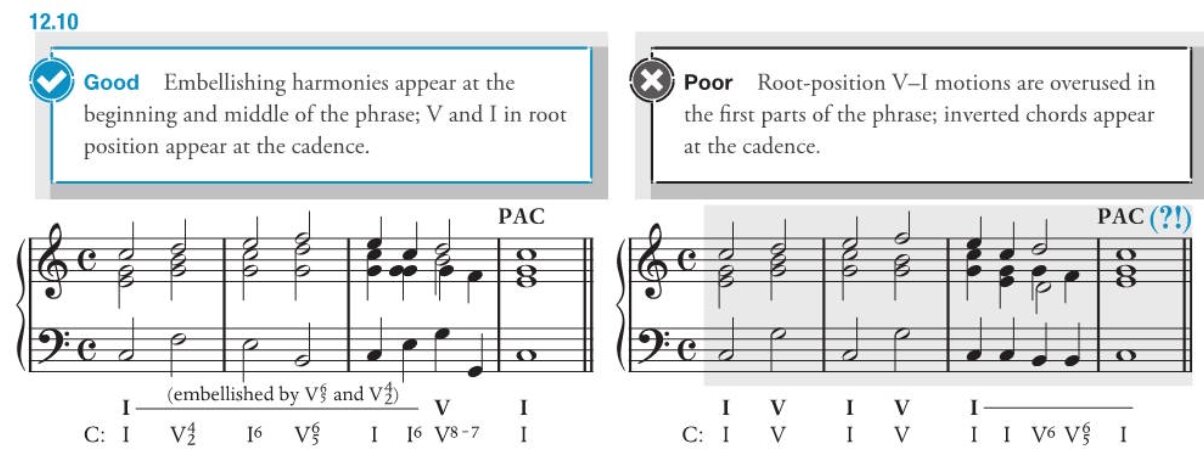
voice leading

$\text{V}_2^4$ figured bass
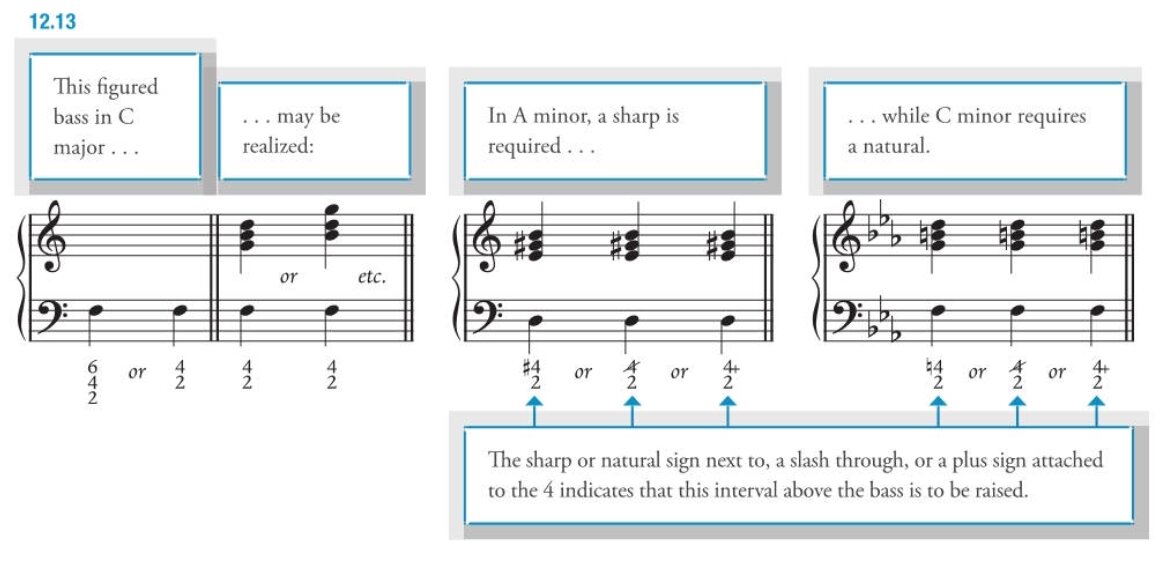
$\text{V}_3^4$ and $\text{vii}^{\circ 6}$

- $\text{V}_3^4$ and $\text{vii}^{\circ 6}$ are dominant
- $\widehat{2}$ is the bass
- moves to $\text{I}/\text{I}^6$ with step in bass
- tend to embellish, do not show up at cadences
$\text{I}-\text{V}_3^4-\text{I}^6$ and $\text{I}^6-\text{V}_3^4-\text{I}$
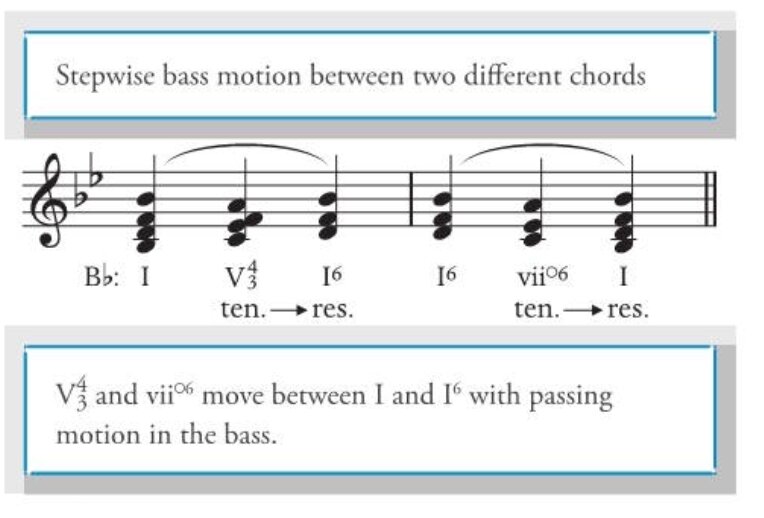
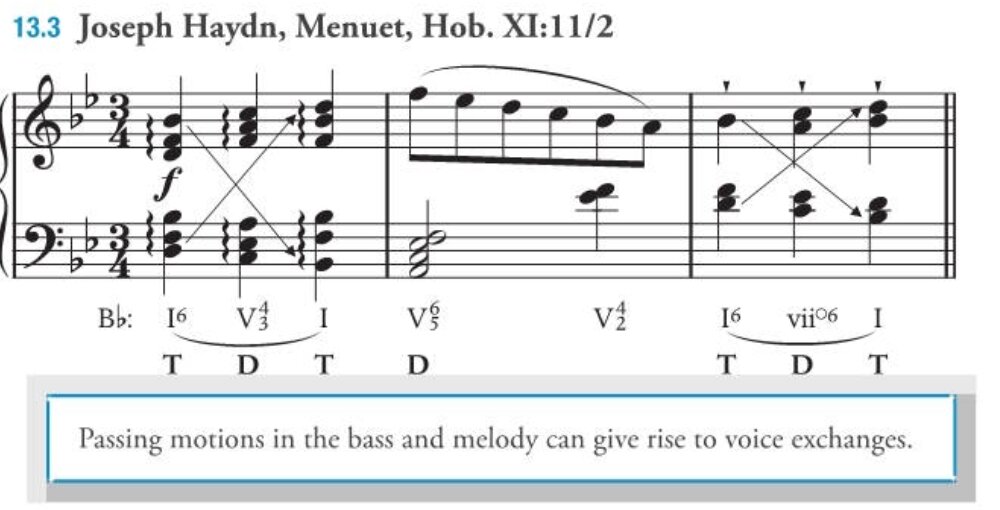
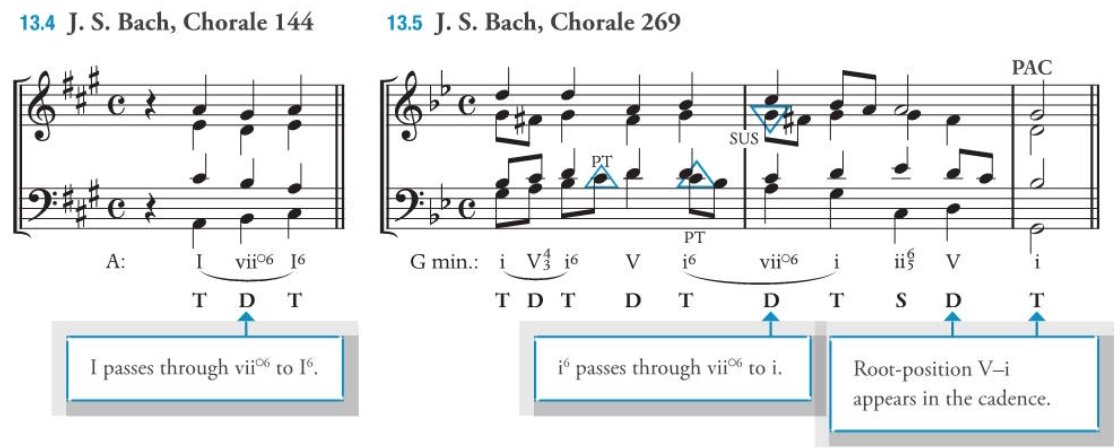
$\text{I}-\text{V}_3^4-\text{I}$
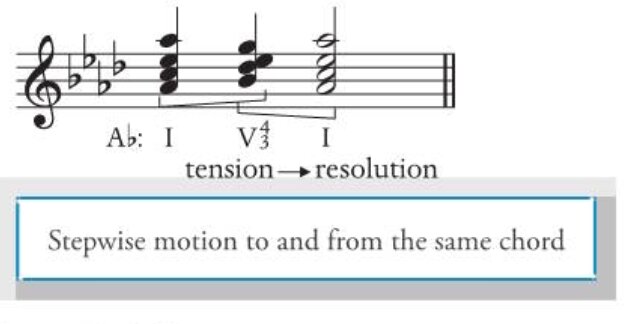
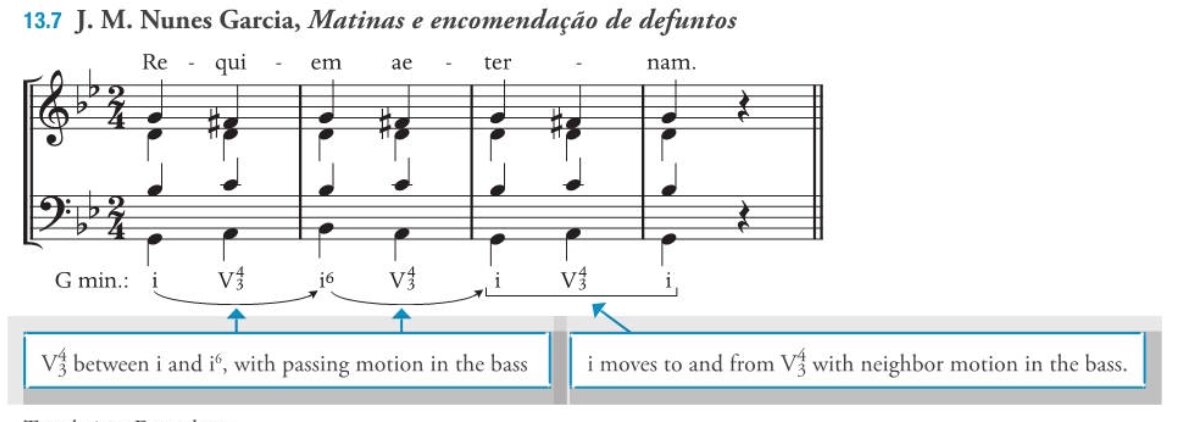
$\text{V}_3^4$/$\text{vii}^{\circ 6}$-$\text{I}/\text{I}^6$ could be used alternating with other D-T progression
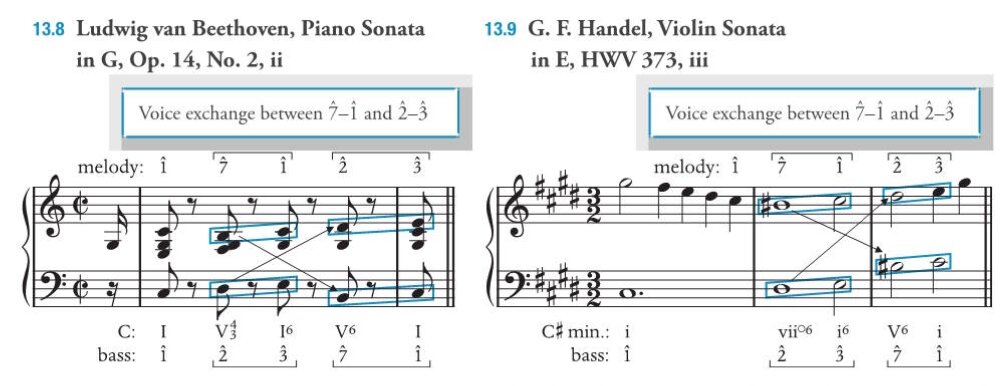
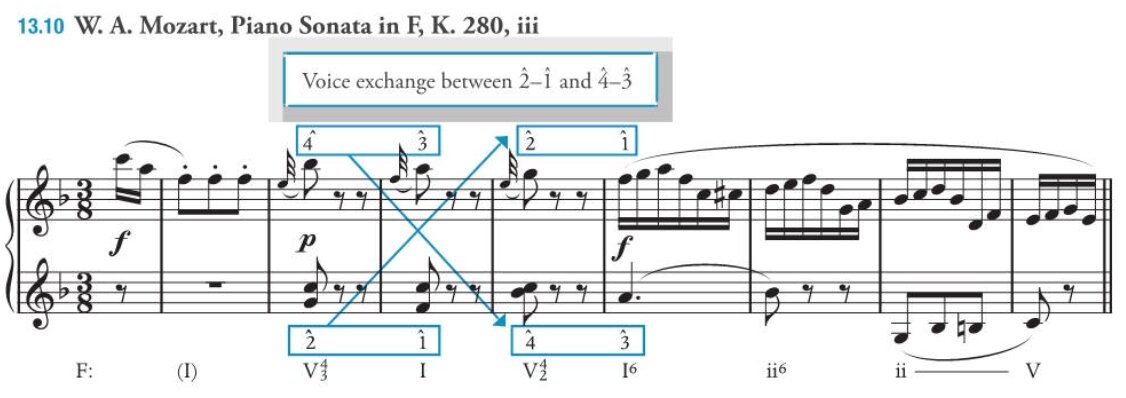
$\text{V}_3^4-\text{V}^7/\text{V}_5^6/\text{V}_2^4$
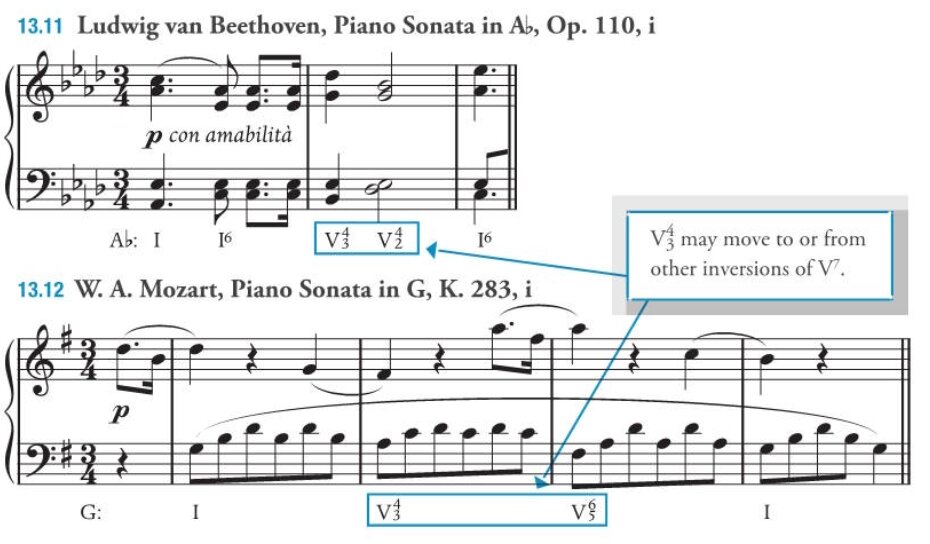
voice leading
- usually smooth, each voice either step or repeat
- do not double the leading tone in $\text{vii}^{\circ 6}$
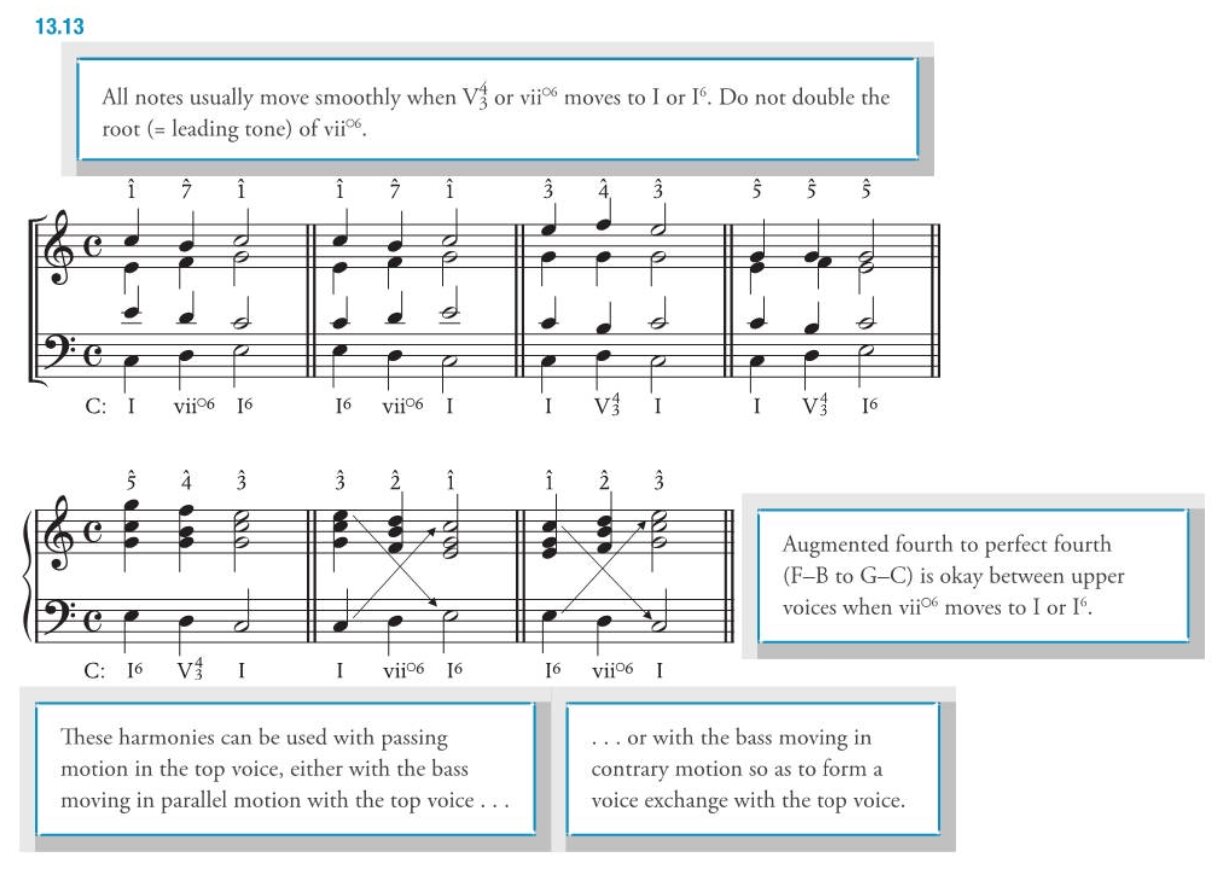
mi-fa-sol melody
$\text{I}-\text{V}_3^4-\text{I}^6$ and $\text{I}-\text{vii}^{\circ 6}-\text{I}^6$ could be used with special exceptions
- bass and top move in parallel 10ths
- in this case it’s ok to move from diminished 5 to perfect 5
- in $\text{V}_3^4-\text{I}^6$ the chordal 7th (at top voice) in $\text{V}_3^4$ could move up instead of step down
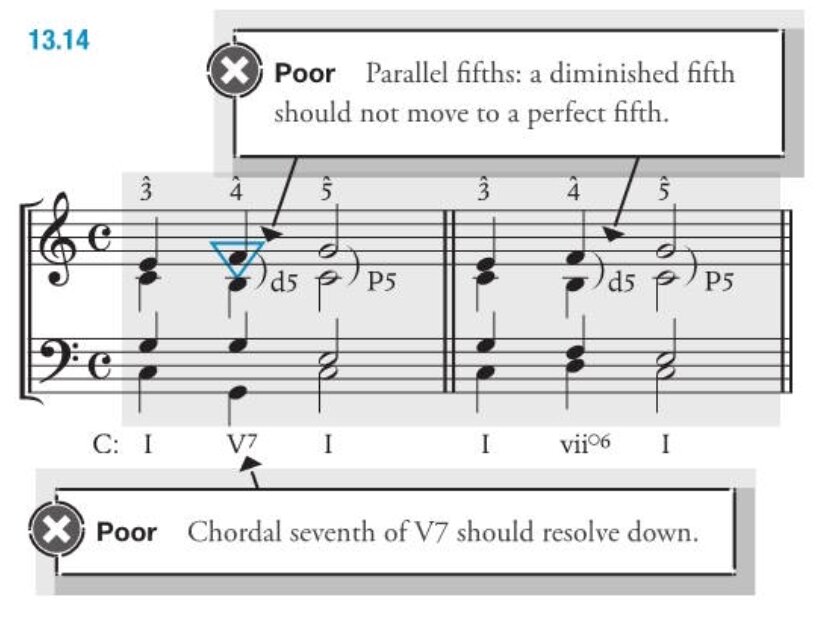
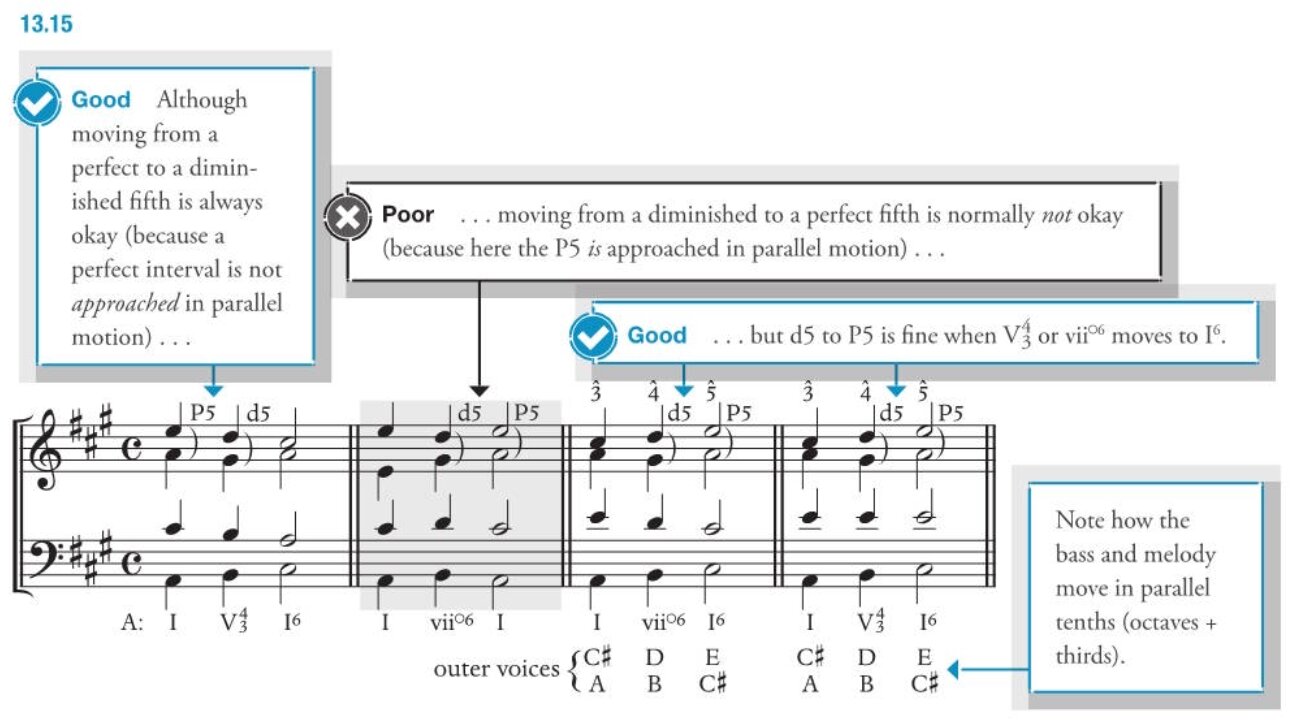
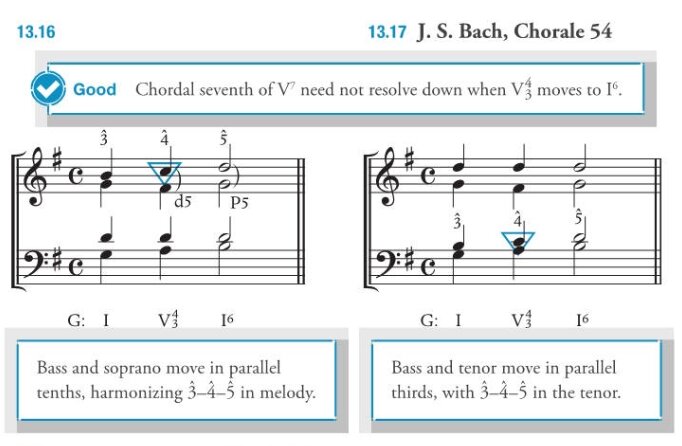
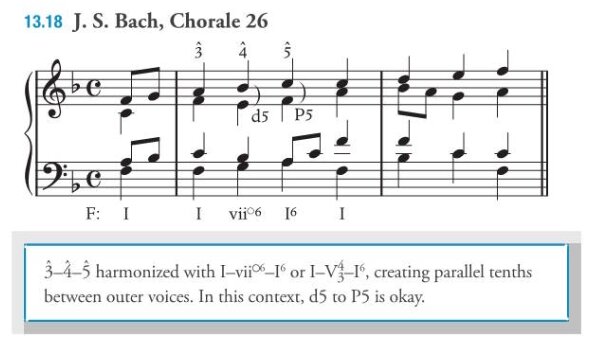
Cadential $_4^6$
- has the same note as the tonic in second inversion
- despite having the GCE notes it’s dominant
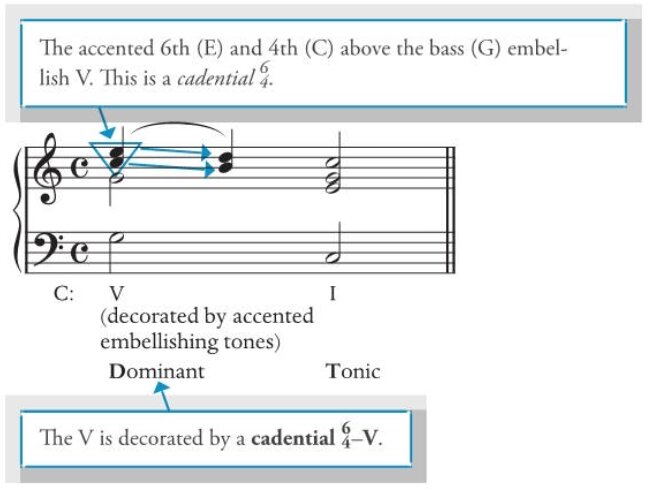
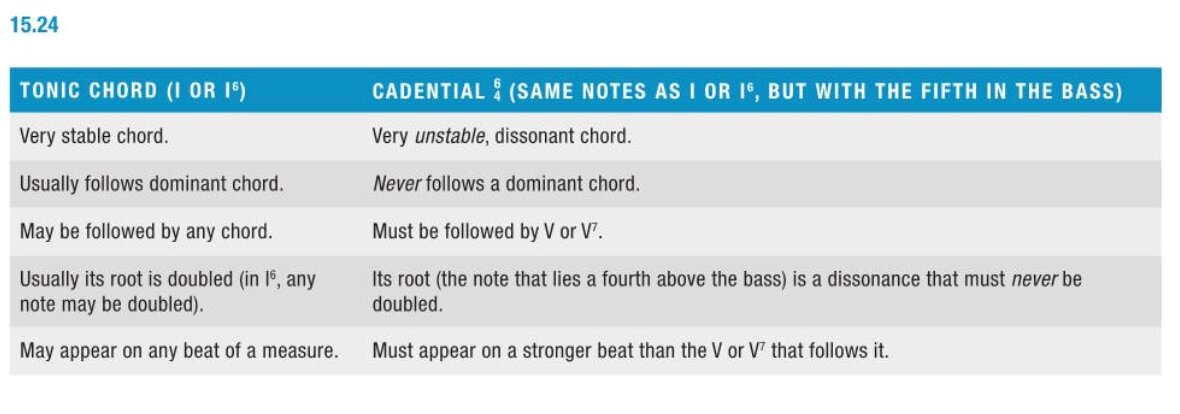
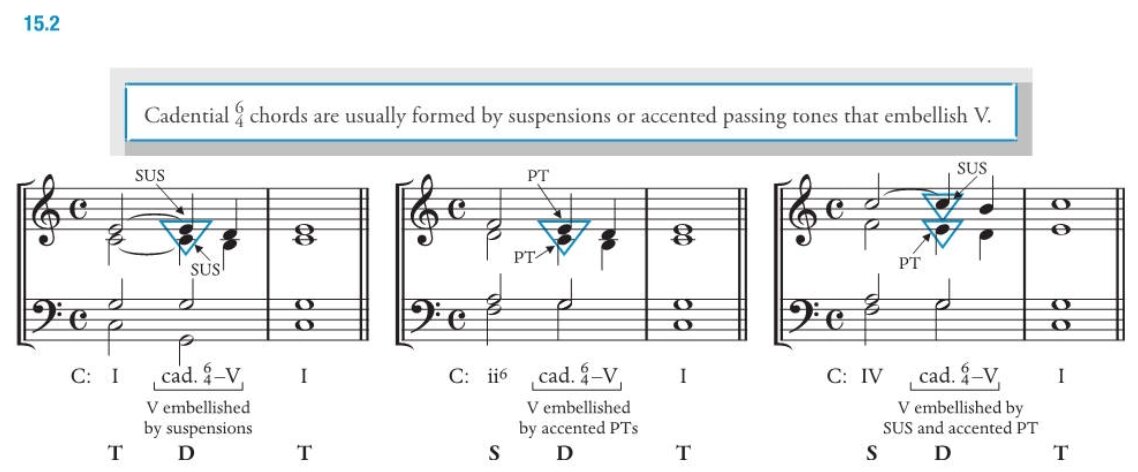
progressions
cadential $_4^6$ - $\text{V}/\text{V}^7$ (root position, not inversions)
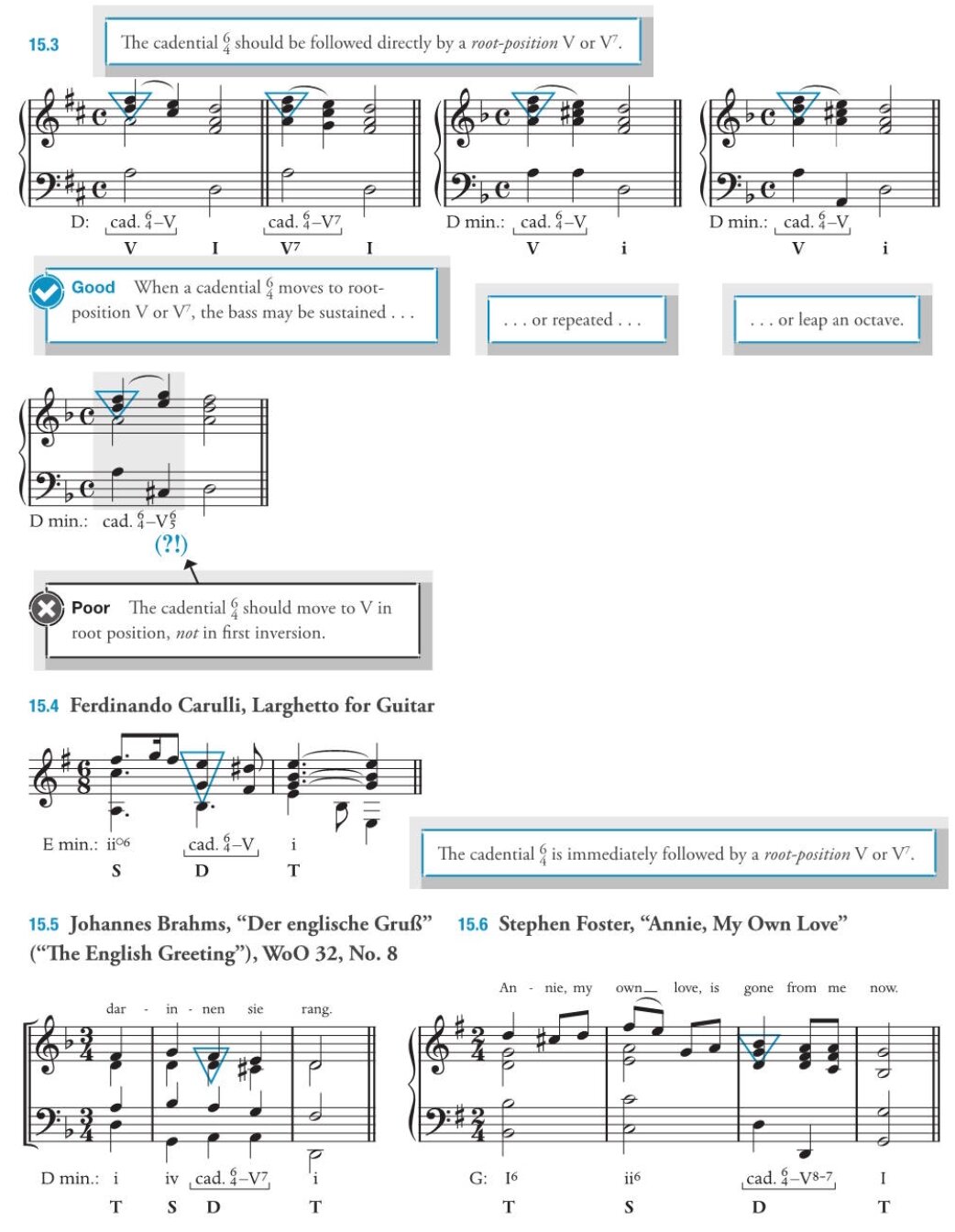
- tonic/subdominant - cadential $_4^6$: ok
- dominant - cadential $_4^6$: bad
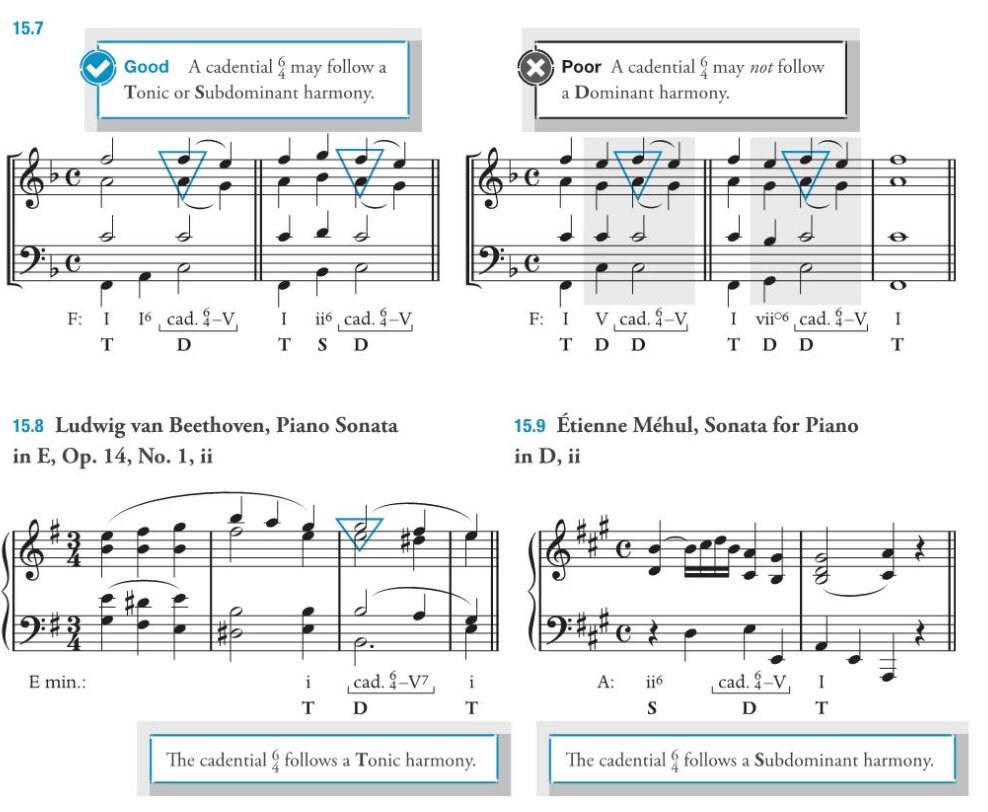
more voice leading
- double the bass;
- do not double the 4th above bass (for example, in GCE, double G, not C)
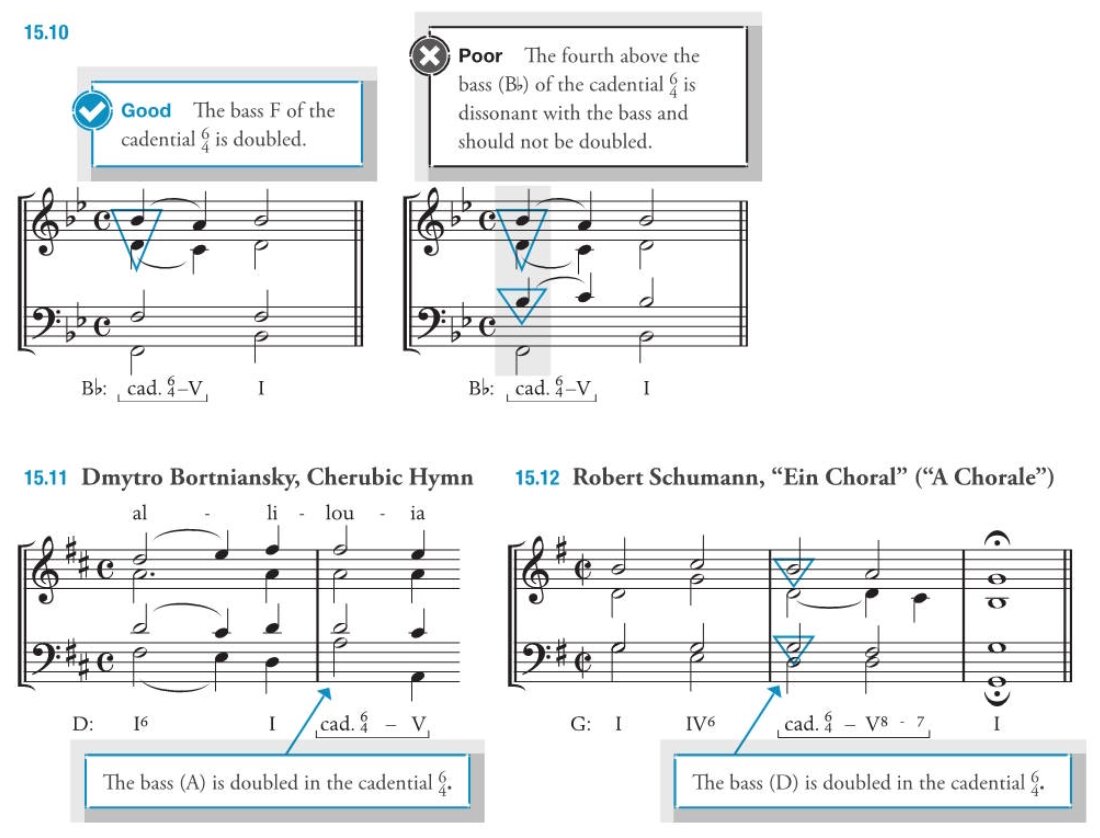
- the 4th above bass is dissonant, should down by the step
- the 6th above bass is not dissonant, usually moves down
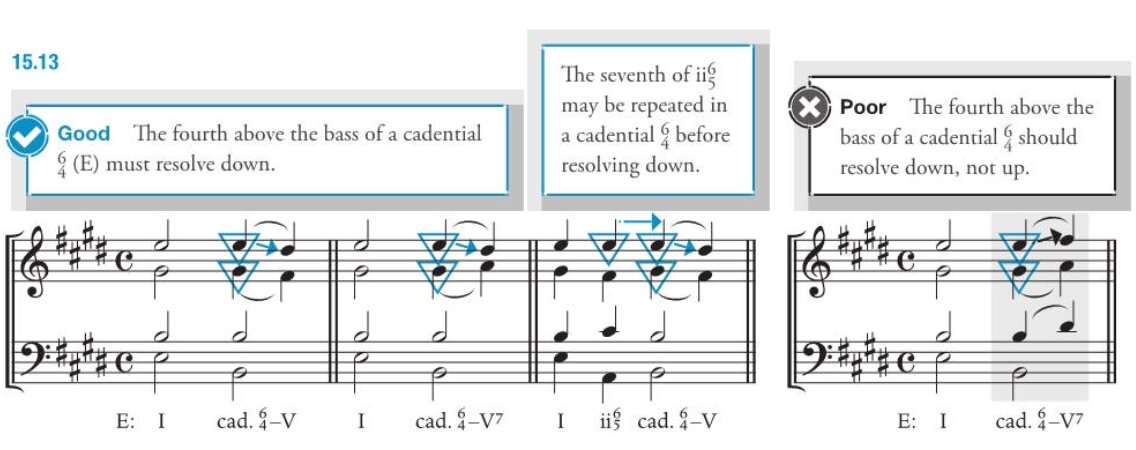
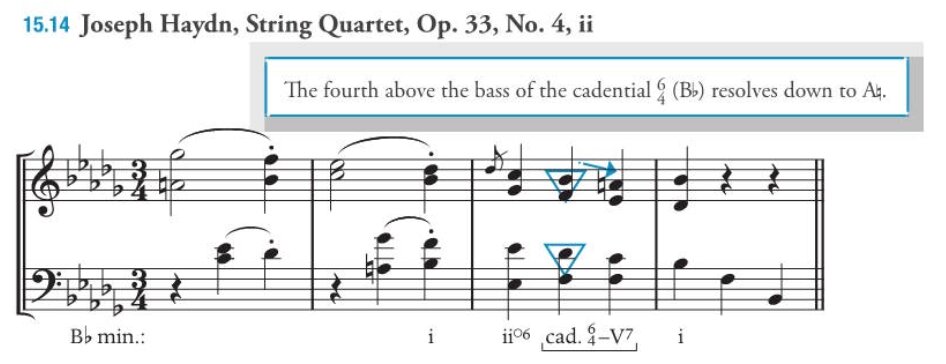
figured bass
- $_{4-3}^{6-5}$ to indicate cadential $_4^6$ - dominant
- $_4^6-\text{V}$ is labeled as $\text{V}_{4-3}^{6-5}$
- $_4^6-\text{V}^7$ is labeled as $\text{V}\underset{\text{4-3}}{\overset{\text{8-7}}{\Tiny{\text{6-5}}}}$
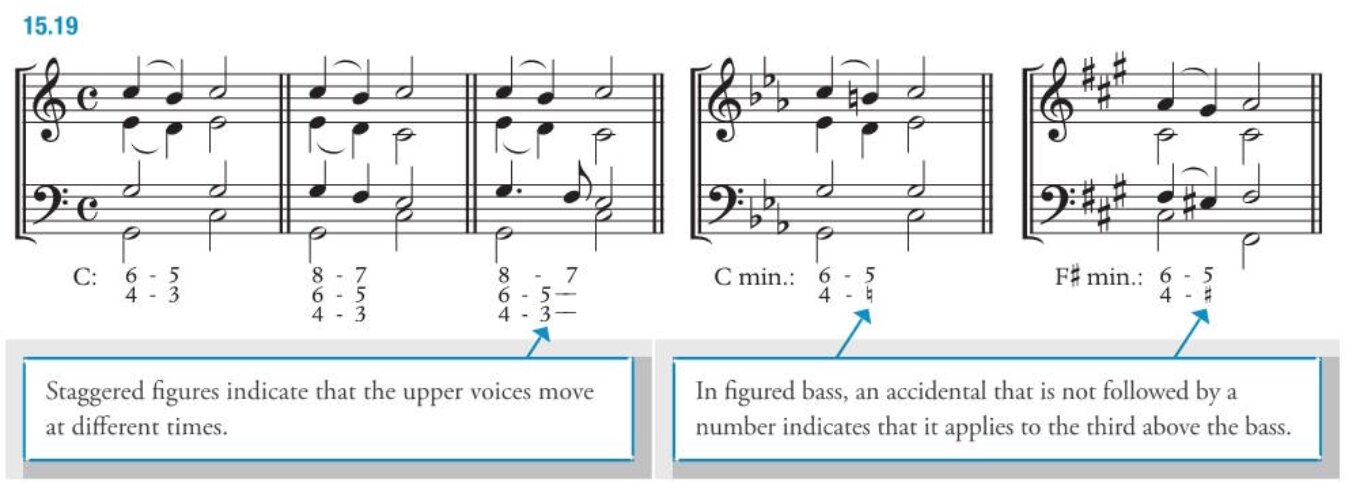
placement
- at cadence as part of half cadence and perfect authentic cadence
- other places in the phrase
- on stronger beat
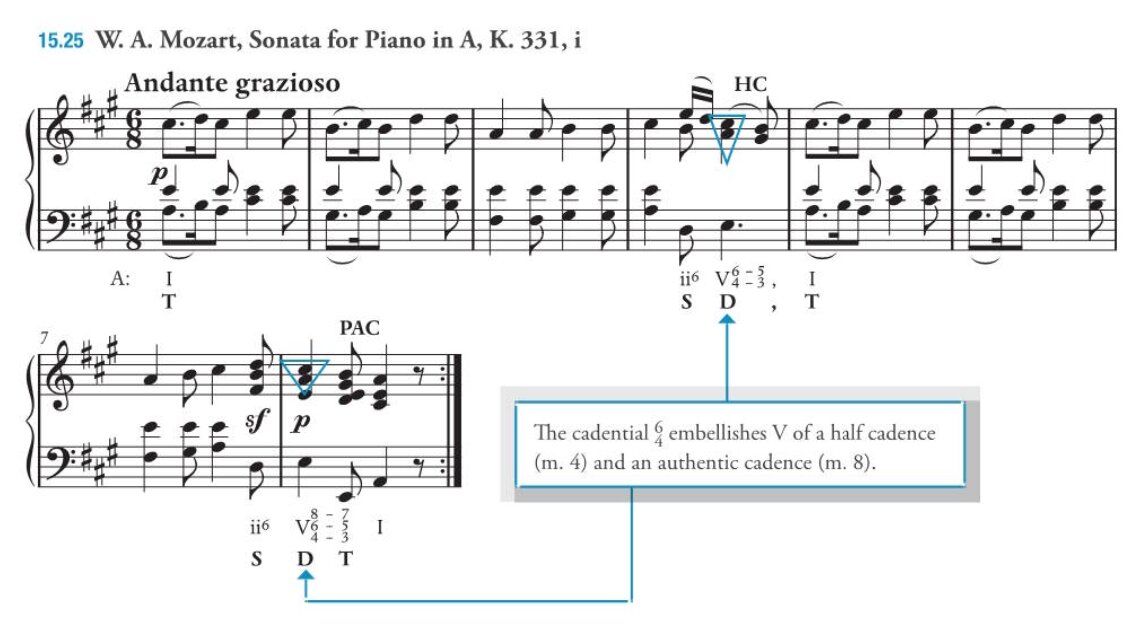
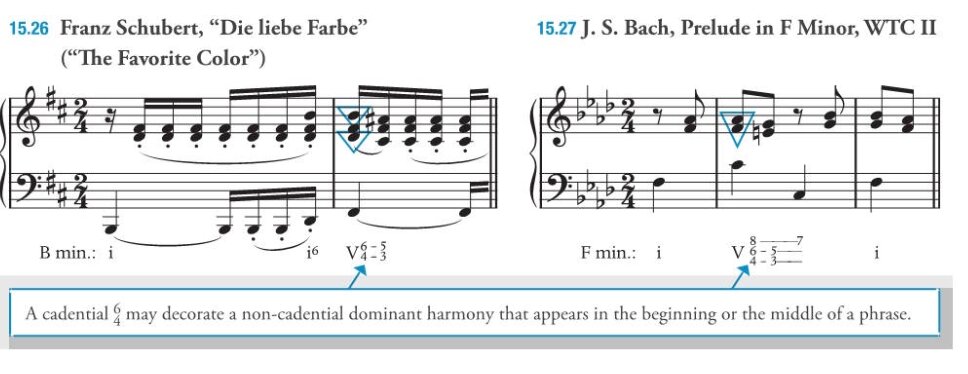
cadential $_4^6$ should be placed at stronger beat
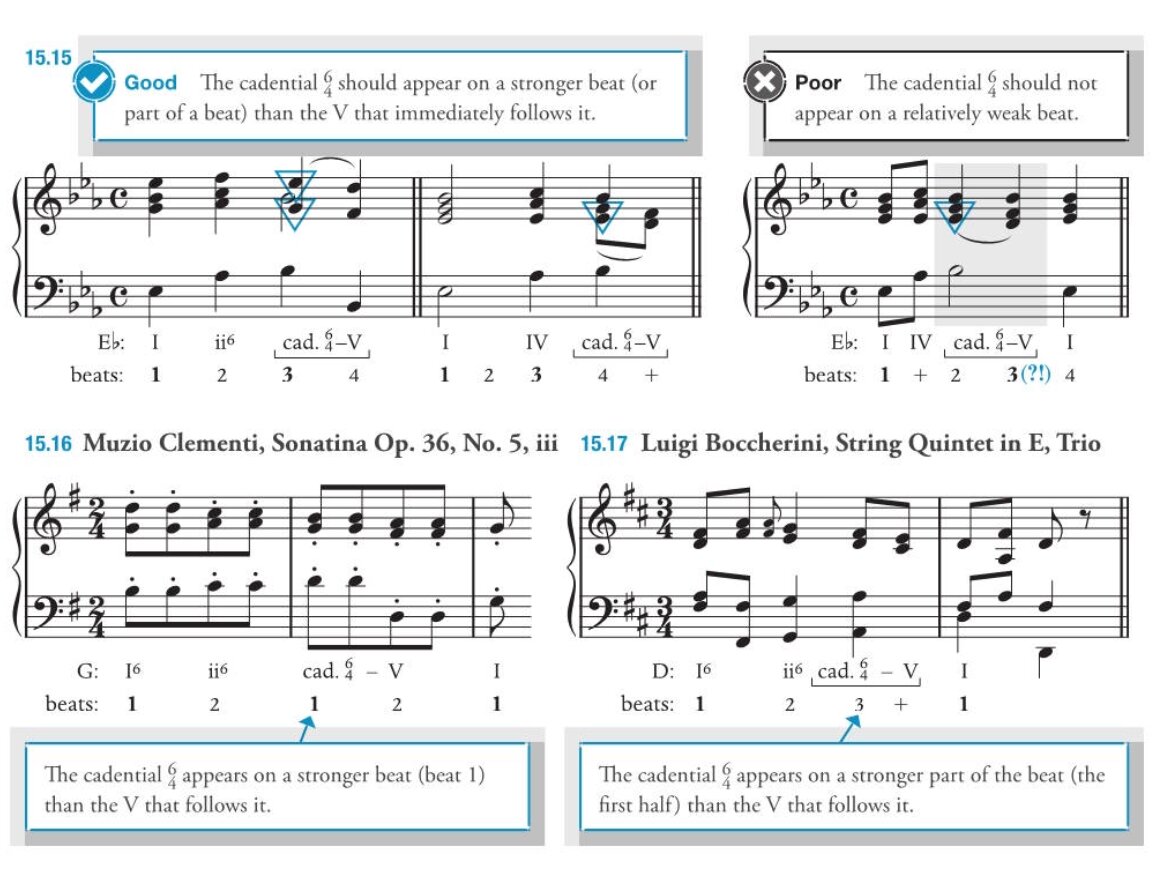
$\text{vii}^{\circ 7}$
- dominants
- leading to $\text{I}/\text{I}^6$
a minor: $\text{V}^7$ is E#GBD, $\text{vii}^{\circ 7}$ is #GBDF
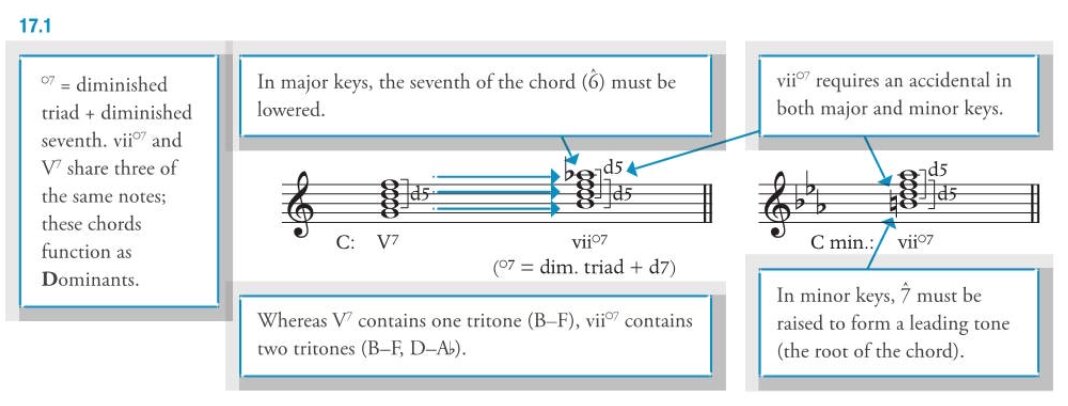
- $\text{vii}^{\circ 7}$ used more in minor keys
- share three notes with $\text{V}^7$
- more dissonant than $\text{V}^7$
- may appear in root position or inversion, unlike $\text{vii}^{\circ}$
- mostly treated like $\text{V}^7$ (inversions) with the same bass tone


- $\text{vii}_2^4$ does not share bass tone with $\text{V}^7$’s inversions
- does not lead to $\text{I}/\text{I}^6$
- less common than other inversions of $\text{vii}^{\circ 7}$
- the chordal 7th must step down but $\text{vii}_2^4-\text{I}_4^6$ is unusual (because both are dominants)

$\text{vii}_2^4-\text{V}^7$ and $\text{V}^7-\text{vii}_2^4$
- can move back and forth
- only one note needs to move because of the shared notes
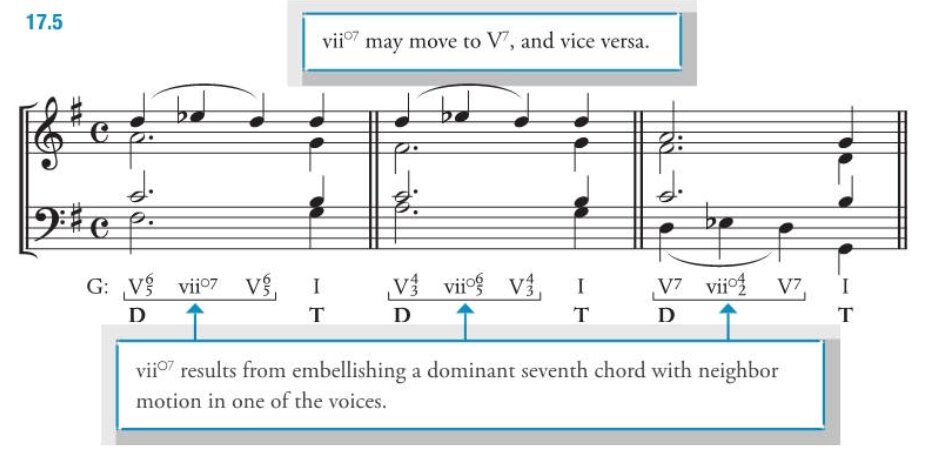
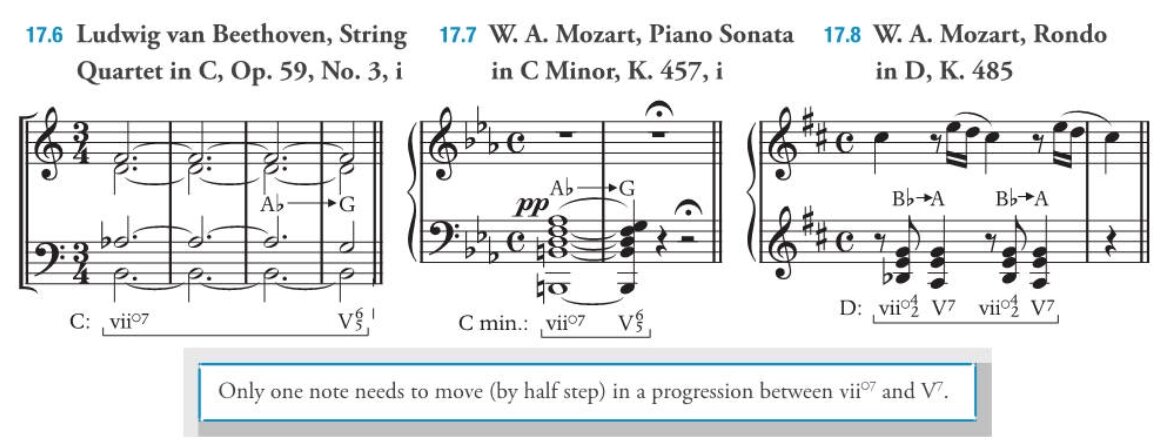
more voice leading
- chordal 7th must resolve down by step
- root leading tone must resolve up by step
- be careful with parallel 5th (double the 3rd of the tonic rather than root)
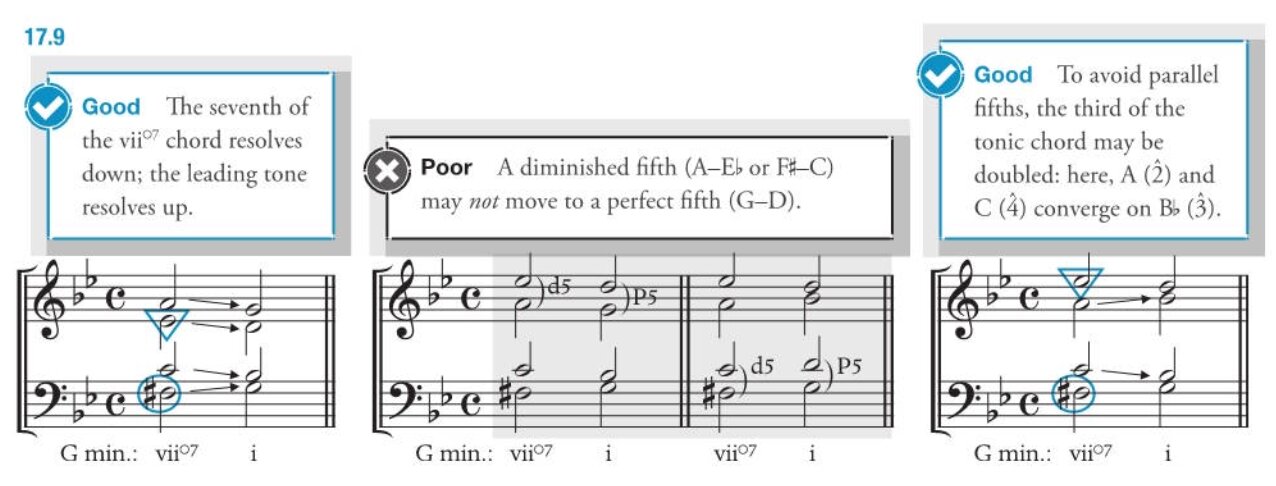
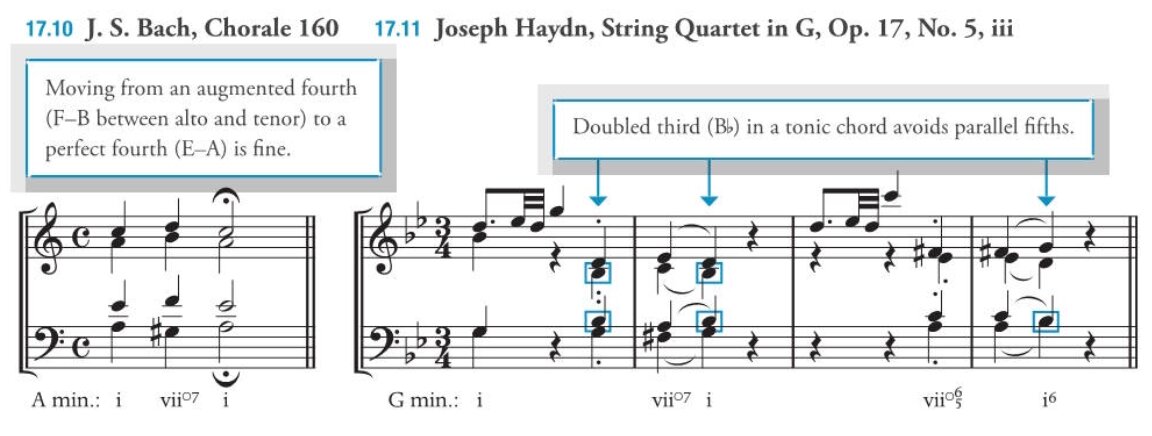
$\text{vii}^{\varnothing 7}$
- found only in major
- similar to $\text{vii}^{\circ 7}$
- dominants

- could appear in root or inversion
- voice leading similar to $\text{vii}^{\circ 7}$
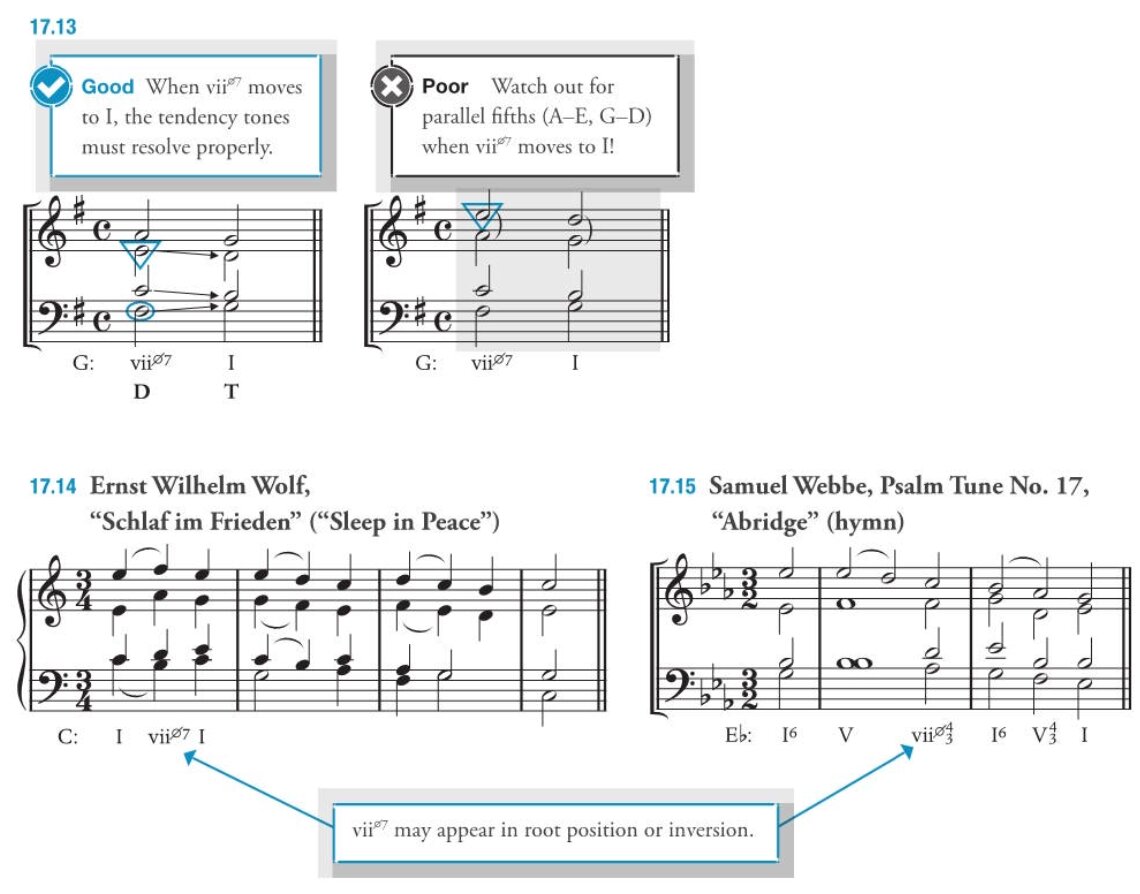
Applied dominants
$\text{V/V}$
- applied $\text{V}$ of $\text{V}$
- a major triad with root 5th above $\text{V}$ with raised $\widehat{4}$
- example: CEG(I), GBD(V), D#FA(V/V)
- in the above example, #F is the secondary leading tone
- moves to $\text{V}$: $\text{V/V}-\text{V}$, just as $\text{V}-\text{I}$
- comes from any chord that can precede $\text{V}$

- the secondary leading tone steps up like leading tone
- do not double it
- normally resolves up
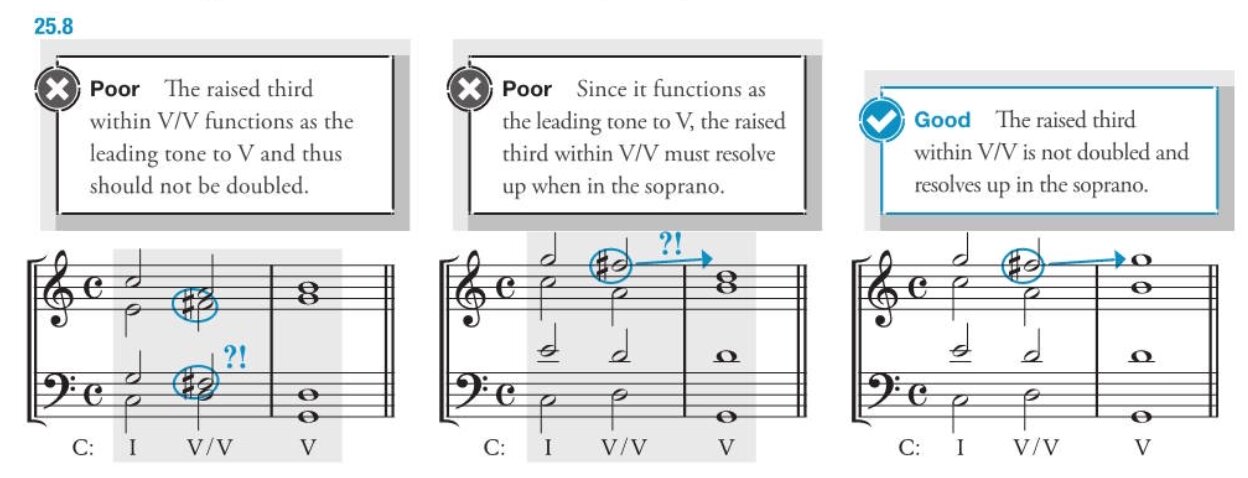
$\text{V}^6/\text{V}$
- first inversion
- leads to root position $\text{V}$, just as $\text{V}^6-\text{I}$
- example: #FAD - GBD

$\text{V}^7/\text{V}$
- dominant seventh
- chordal 7th needs to resolve down
- may be in inversions

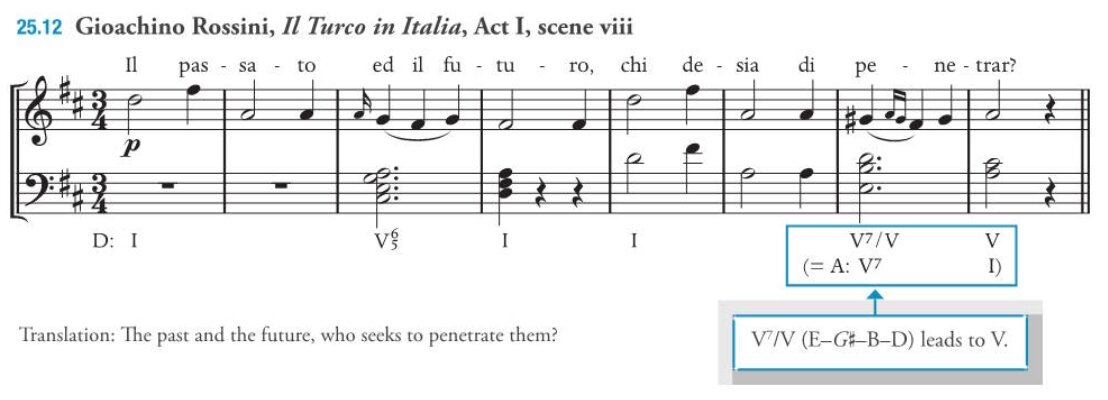
- $\text{V}_2^4/\text{V}-\text{V}^6$ similar to $\text{V}_2^4-\text{I}^6$
- $\text{V}_5^6/\text{V}-\text{V}$ similar to $\text{V}_5^6-\text{I}$
- $\text{V}_3^4/\text{V}-\text{V}/\text{V}^6$ similar to $\text{V}_3^4-\text{I}/\text{I}^6$
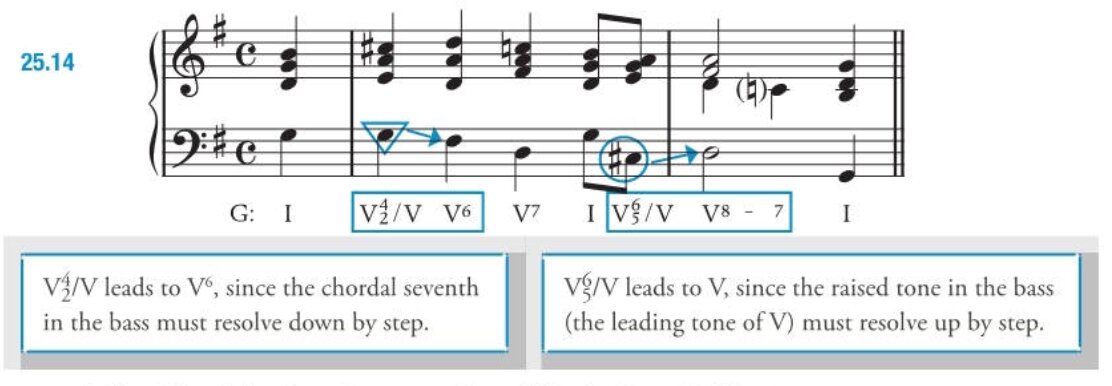
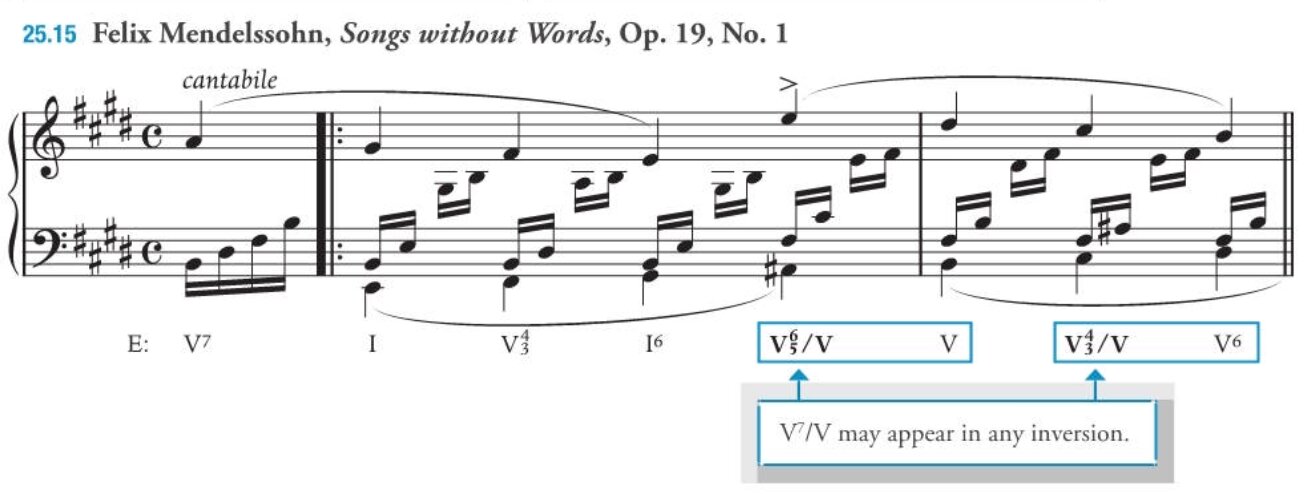
$\text{V/V}$ in minor
- two accidentals
- raised $\widehat{4},\widehat{6}$ (example: B#D#F for a minor)
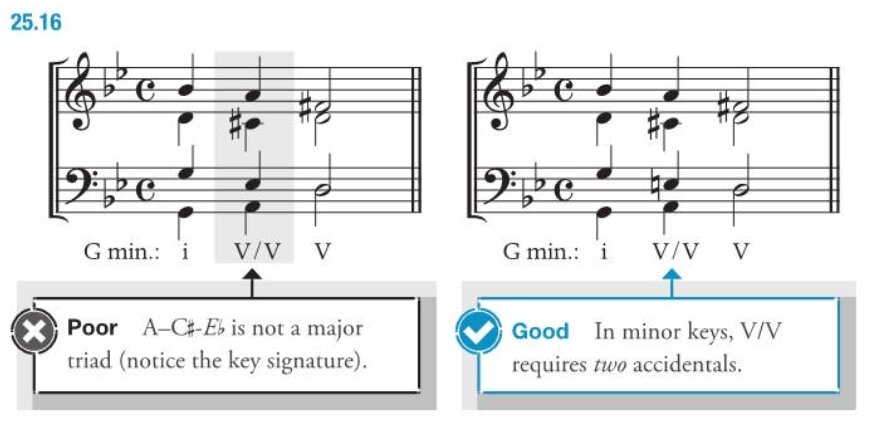
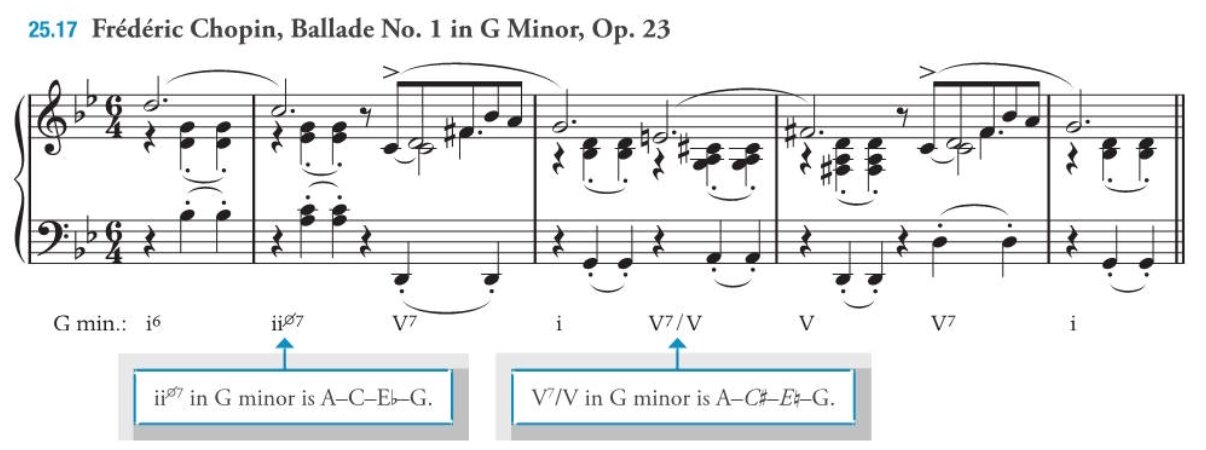
other resolutions
$_4^6$ decoration before $\text{V}$

- could also lead to $\text{V}^7$ instead of triad $\text{V}$
- leading tone raised $\widehat{4}$ usually goes to $\widehat{5}$
- raised $\widehat{4}$ may also go down to $\widehat{4}$
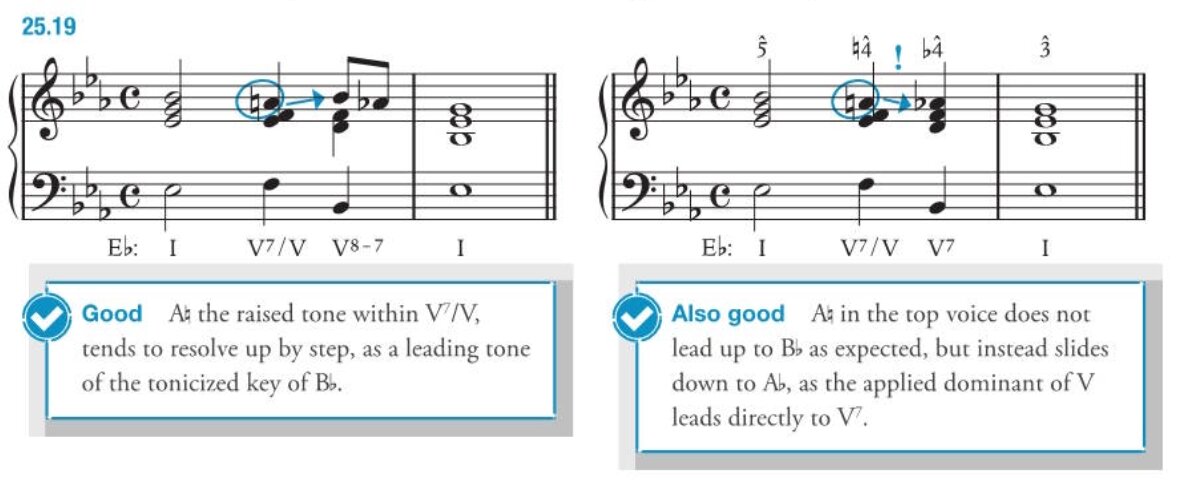
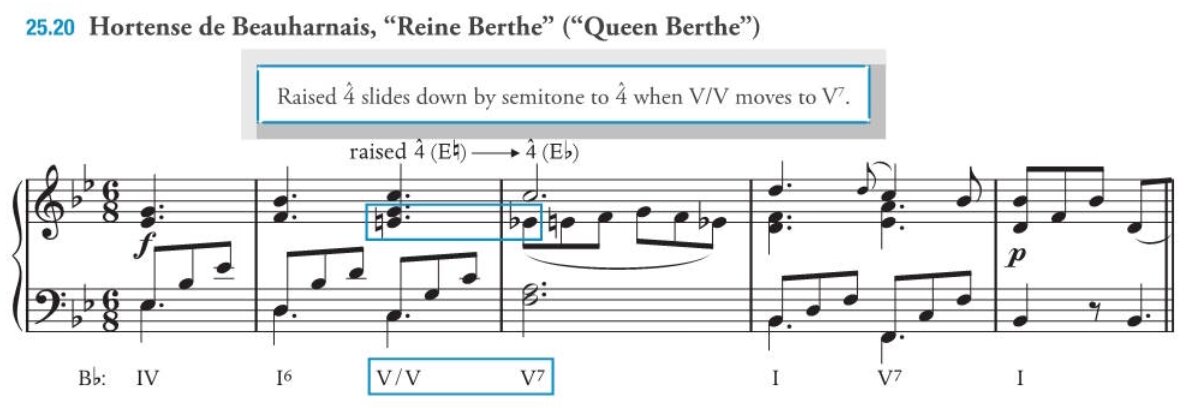
Other applied chords
- all applied chord tonicize the chord to which they are applied
- function as dominants
- leads to the chord to which they are applied
- momentarily departs from the main key
- in both major and minor: could be find by forming a triad on the note that’s “sol” then the note being tonicized is treated as “do”
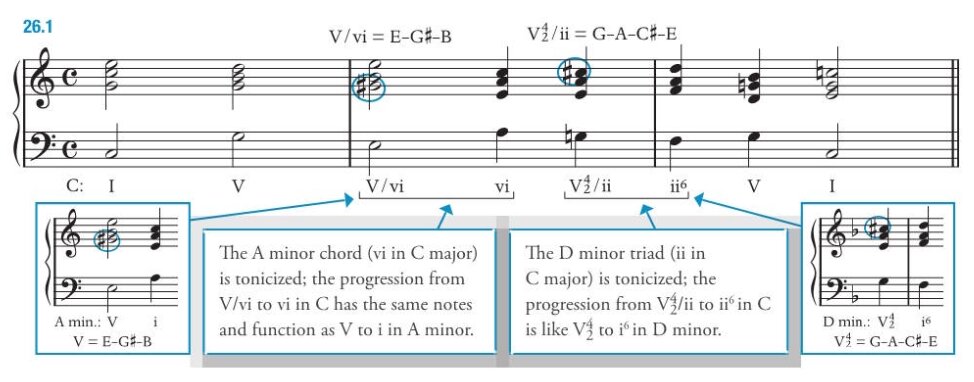


do not double the leading tone of the applied chord

in major keys
- $\text{ii},\text{iii},\text{IV},\text{V},\text{vi}$ could be preceded by an applied dominant
- $\text{vii}^{\circ}$ cannot be tonicized by an applied dominant because a diminished triad cannot be the tonic
- the third functions as the leading tone
- applied triad may appear in root or first inversion
- applied seventh may appear in any inversion
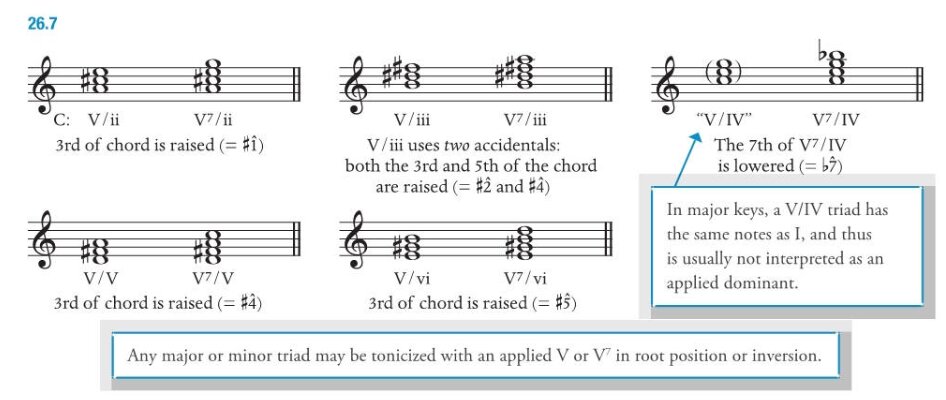


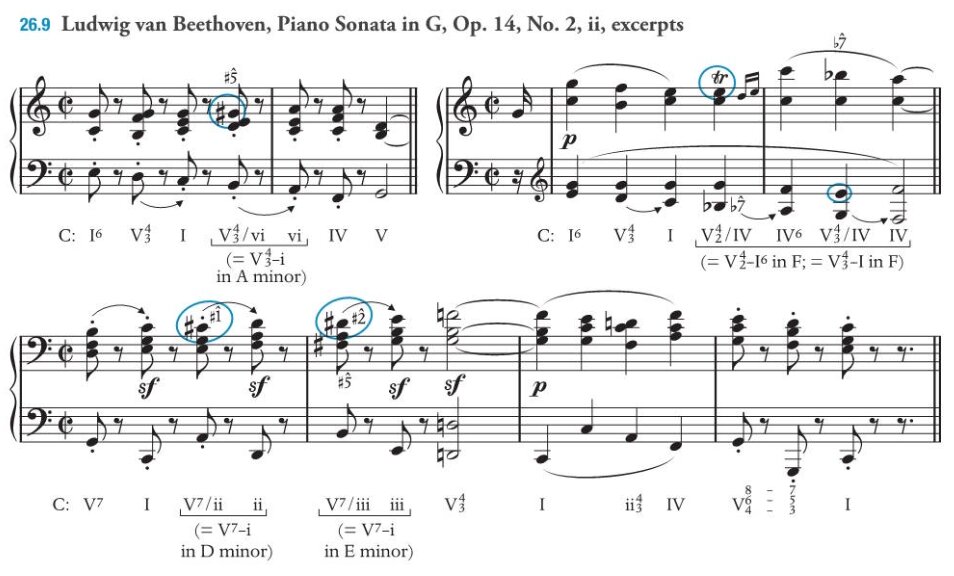
in minor keys
- $\text{III},\text{iv},\text{V},\text{VI},\text{VII}$(not raised $\widehat{7}$, just plain $\widehat{7}$) triads could be preceded by an applied dominant
- $\text{ii}^{\circ}$ cannot because it’s diminished
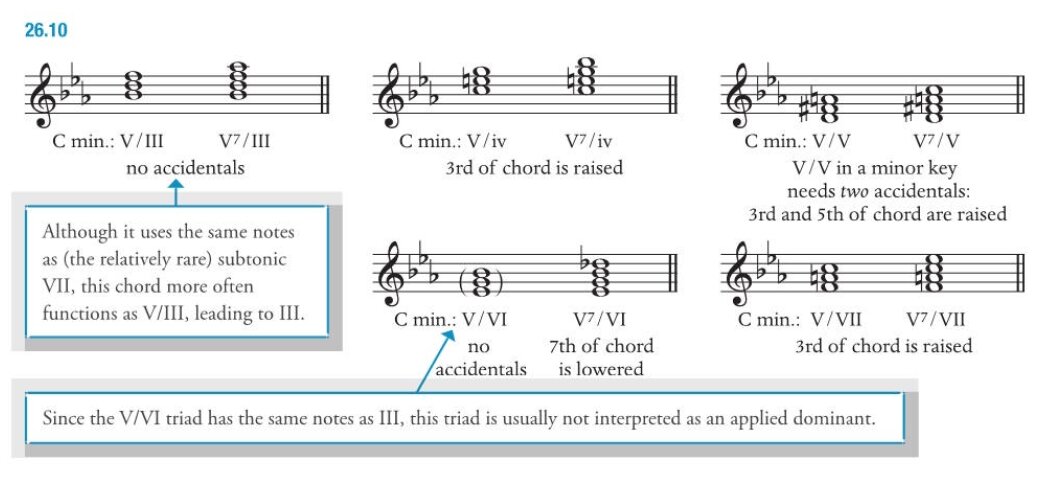
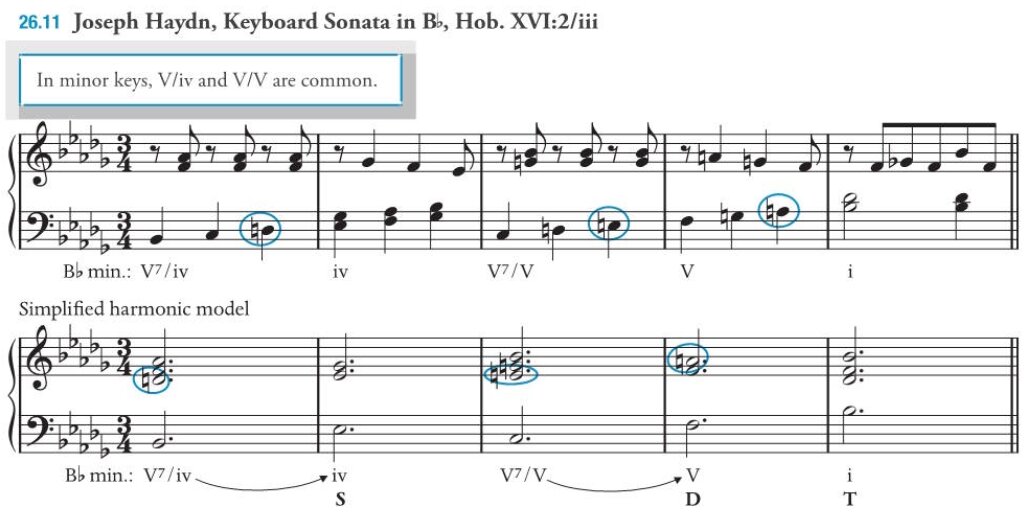
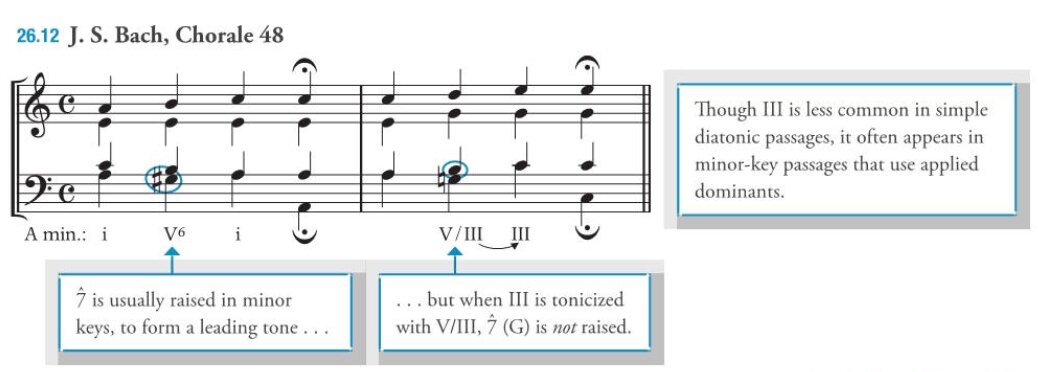

applied $\text{vii}^{\circ 6}$, $\text{vii}^{\circ 7}$, $\text{vii}^{\varnothing 7}$
- $\text{vii}^{\circ 6}$ and $\text{vii}^{\circ 7}$ are dominants
- the root is the leading tone of the note being tonicized (a minor second below)

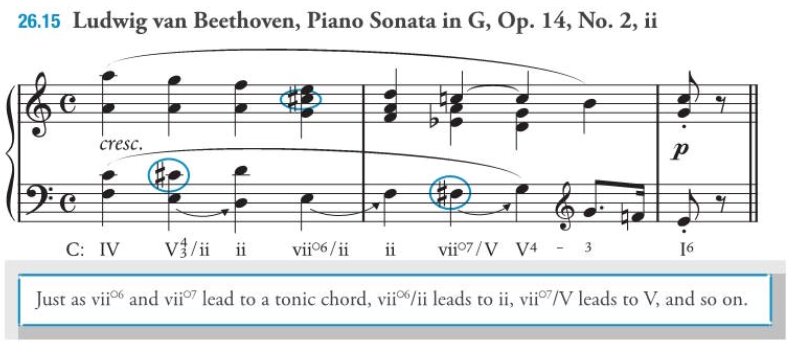

- $\text{vii}^{\varnothing 7}$ can only be used on major chords (no $\text{vii}^{\varnothing 7}$ in minor scale)



harmonizing using applied chords
useful for harmonizing chromatic tones in melodies
